Contact

Created: 11 October 2002 Updated:
7 Nov 2017
![]() In memory of
Patricia Lane and Ann McCarthy WRAF
In memory of
Patricia Lane and Ann McCarthy WRAF
![]()
|
This page is dedicated to the memory of 2004740 Leading Aircraftswoman Patricia Elizabeth Lane WRAF Even her death was a wartime secret in one of the most secret places on earth. For those of you who have not yet been to see HQ Western Approaches for yourselves, get there - its well worth the trip/money! I have just found out that a friend of Patricia, Ann McCarthy, has passed away (Feb 2016 - rest now ladies, your duty done). Ann was a Leading Aircraftwoman (2081006) and was at Western Approaches (HQ 15 Group RAF) from 1941-1944 working as a teleprinter operator. |
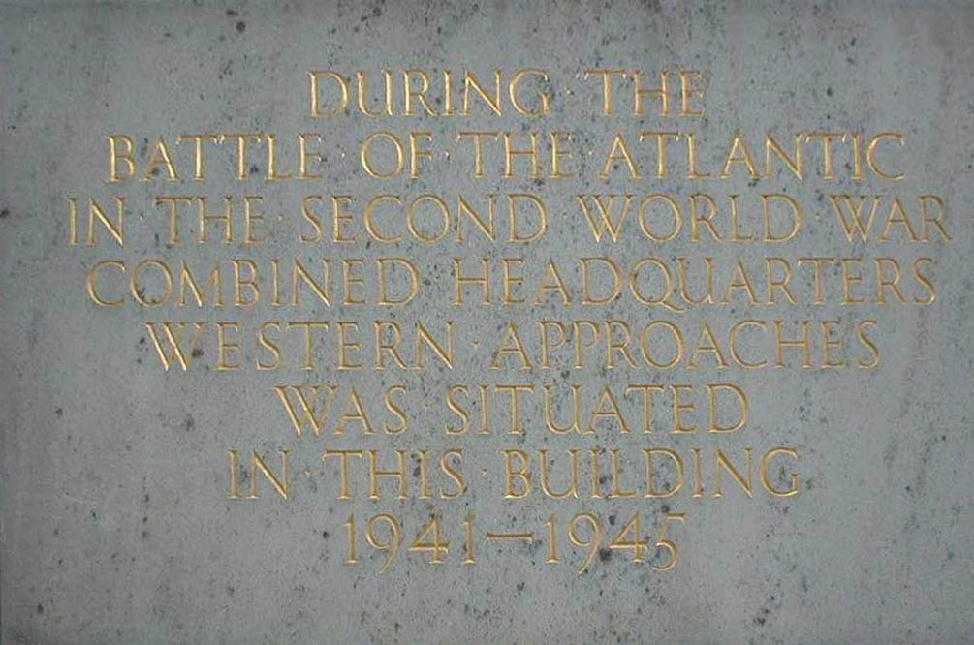 |
|
|
On Tuesday 8th July 2003 I made what I hope is only my first visit to HQ Western Approaches - the resulting images of this visit can be found below. From the lovely lady in the reception to the very nature of the site, brilliant, remarkable! Some of these are slightly blurred, and bad (low) lighting did not help. I will hopefully rectify this on another visit in the not too distant future. Go and see this remarkable site for yourself, it is well worth the visit and will leave you in awe of the immense tasks these man and women took upon themselves. Their heroism and hard work is evident in the very fabric of the building. Open to the public on the 1st March every year. The Western Approaches is open from 10.30am to 16.30pm, with the last admissions being at 15.30pm, every day except Friday and Sunday.
|
|
|
Visit to HQ Western Approaches Tuesday 8th July 2003 |
|
|
The first room entered after leaving the official reception upstairs. Here you had to show your valid pass or - you got no further - whoever you were! |
|
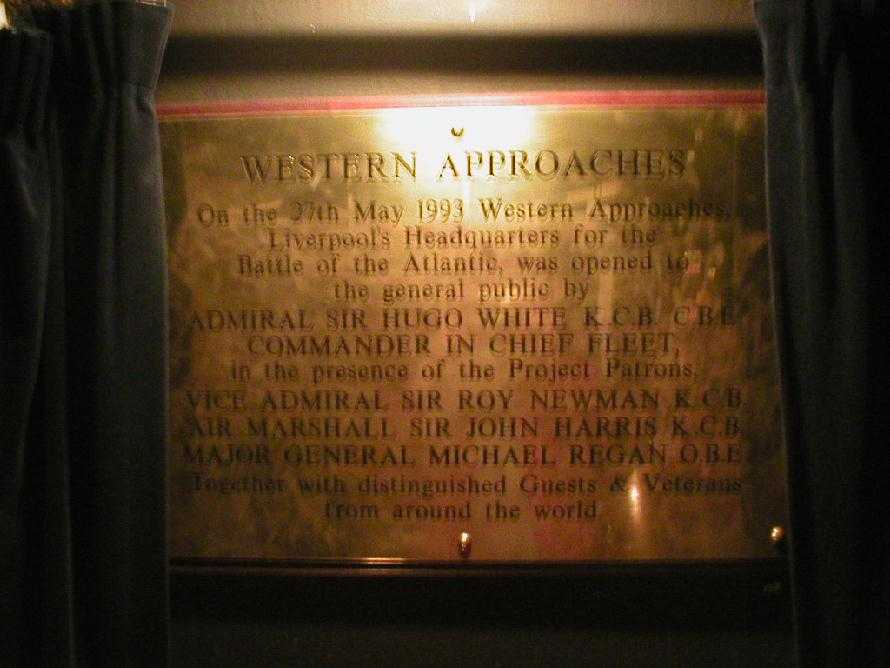 |
The main emergency power control board for the complex as it was in 1941. Again, a slightly blurry image. I will have to take some more on the next visit. The lighting was very subdued and therefore I could not necessarily see exactly what I was trying to photograph. |
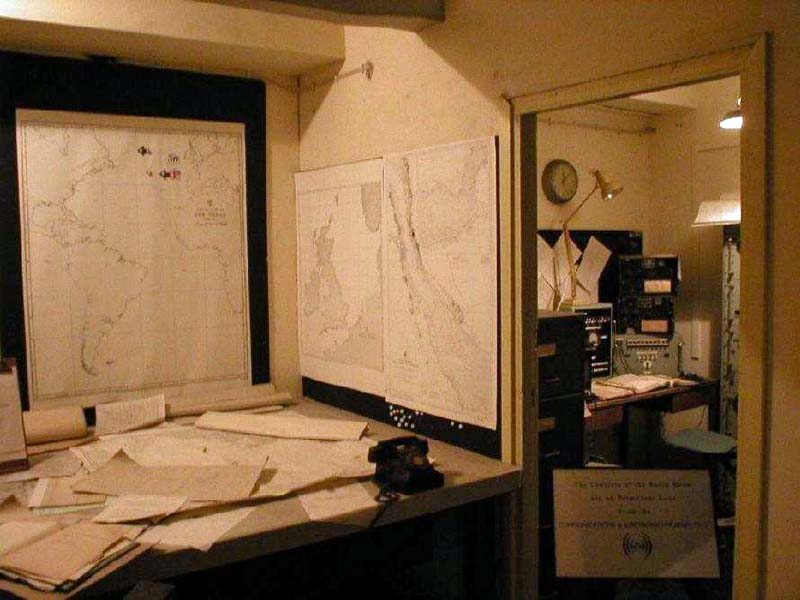 The next section we arrived at was the RAF Plotting and Radio Room. This is situated just down the corridor and through a door from the Main Operations Room. |
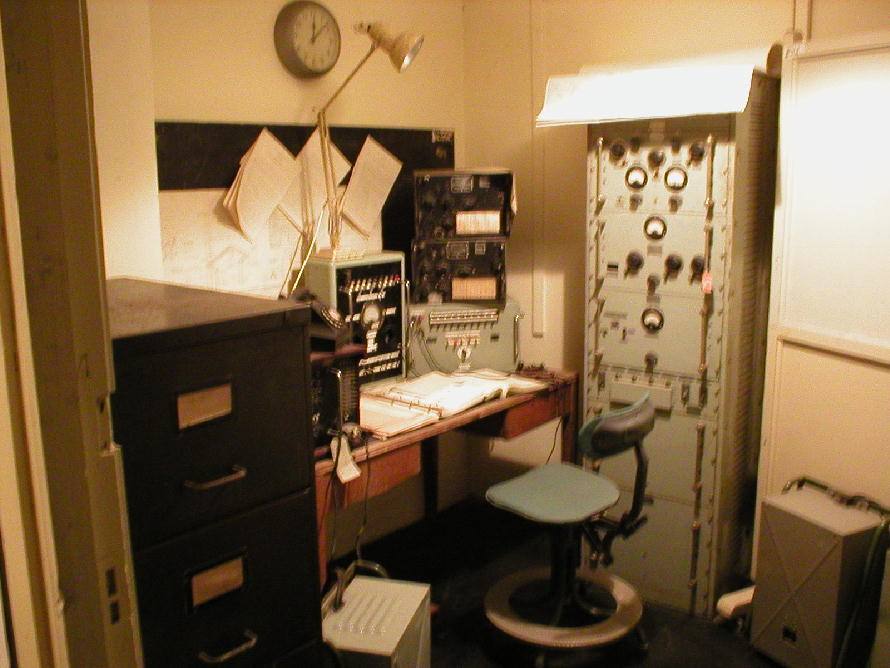 An image of the radio room adjacent to the RAF plotters taken on 10 Sep 05 |
|
Wall maps showing on the right, the River Mersey & surrounds |
|
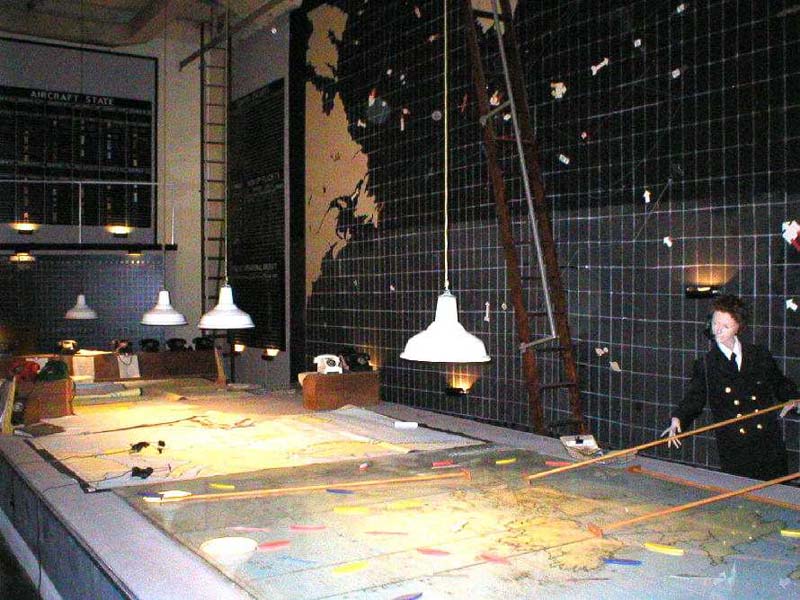 An Apr 05 view of the Plot |
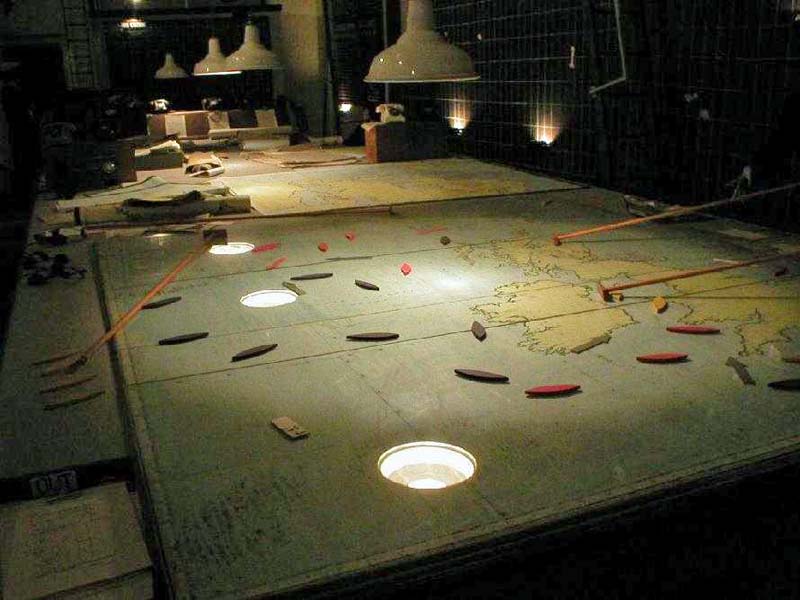 |
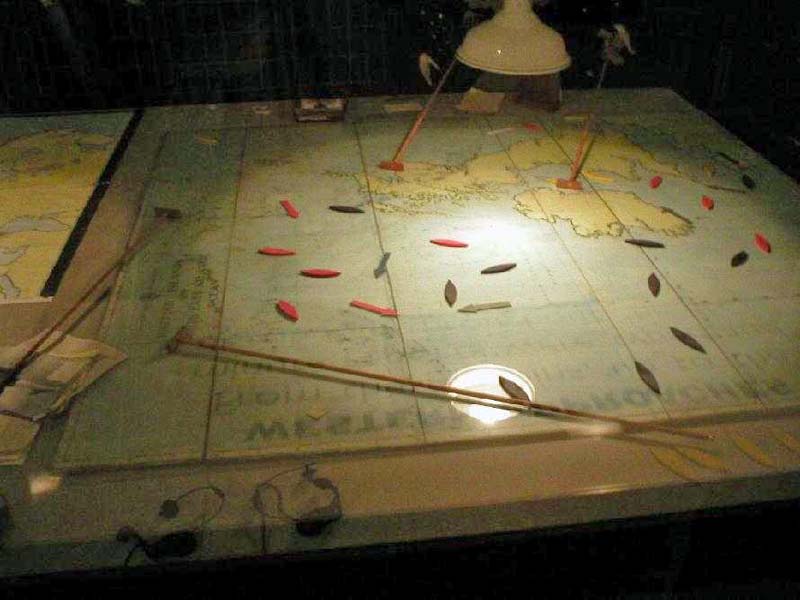 |
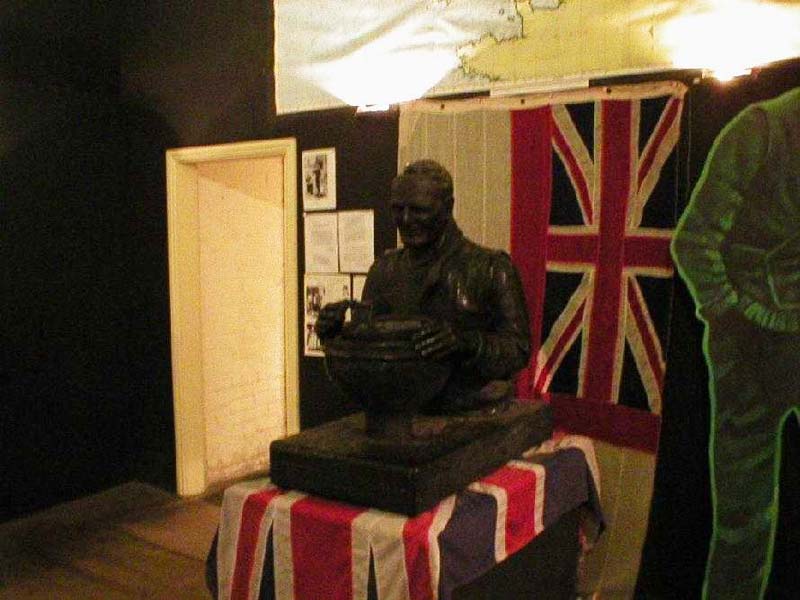 Captain FJ Walker RN |
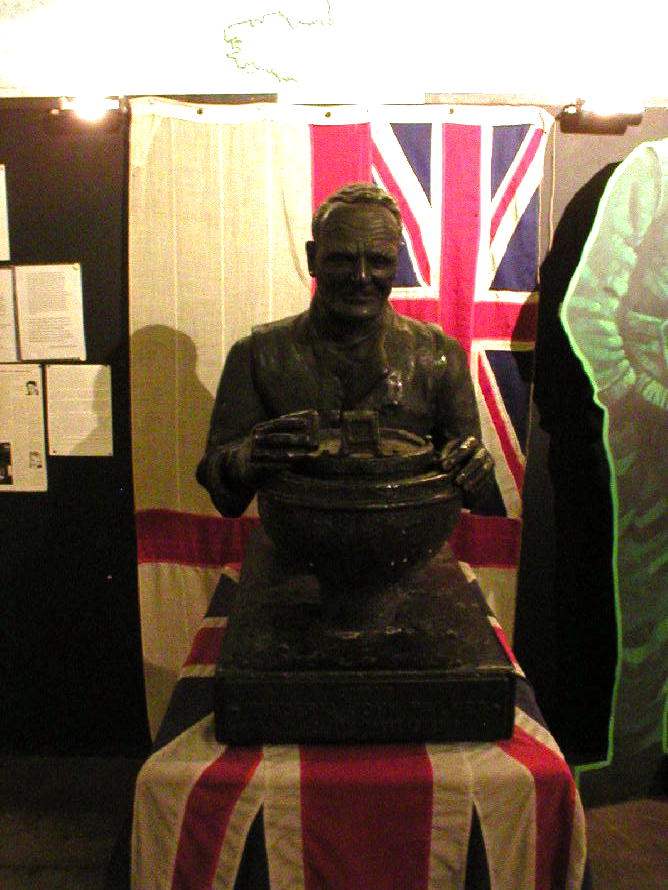 Another of the bust, taken on 10 Sep 05. His "buttie" in hand as he stalks a U Boat |
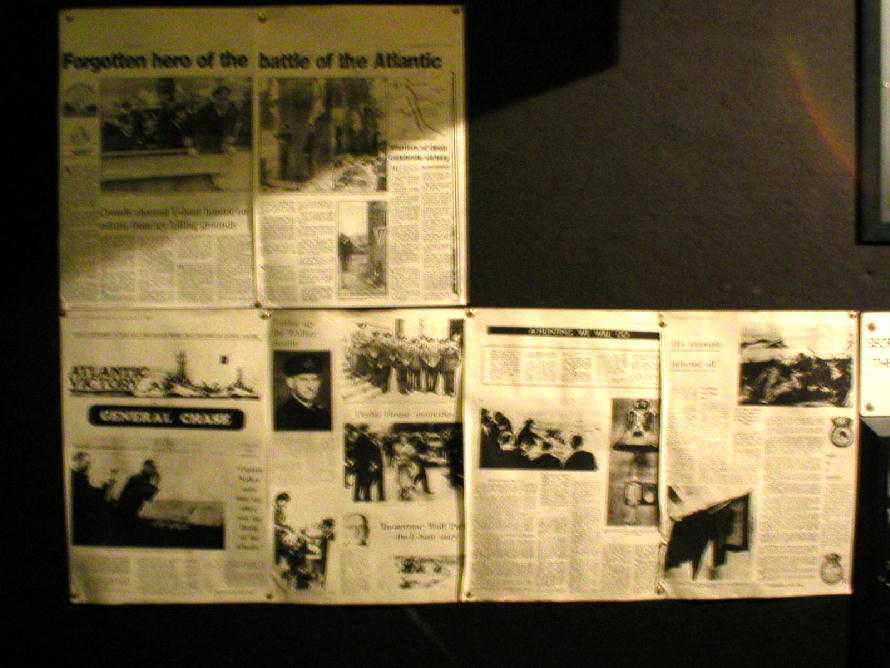 Newspaper articles on Captain Walker |
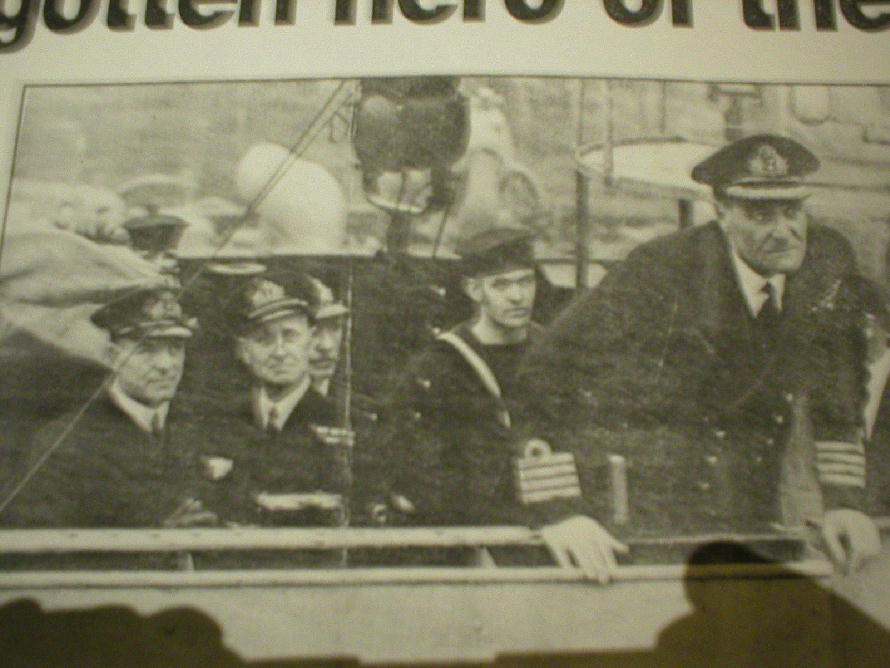 A close up of one of the images showing Walker straining to hear some shouts, presumably from the dockside |
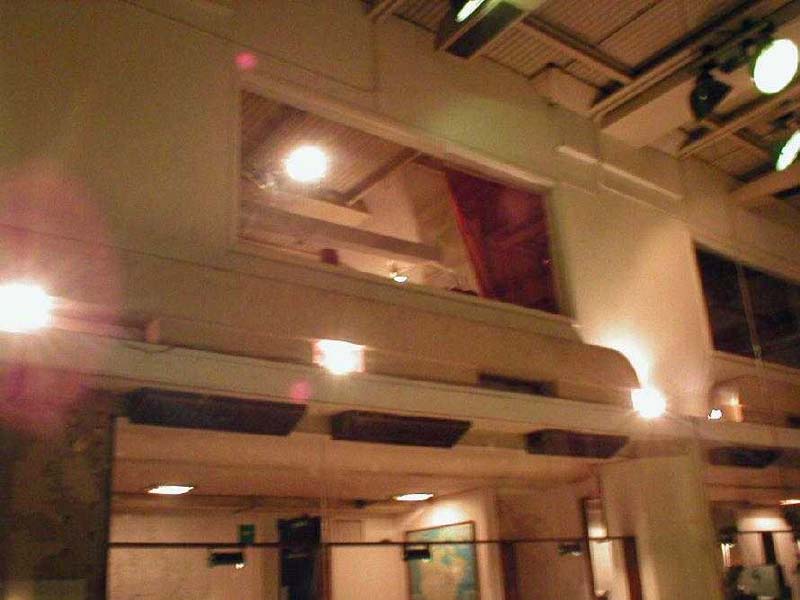 From above, the C in C; Admirals Sir Percy Noble (up to 41) and Sir Max Horton (from 41) would look down from their office and watch the war unfold. Decisions made here would affect the lives of thousands and thousands of sailors both of the Merchant Navy and Royal Navy and of sailors from all corners of the globe. |
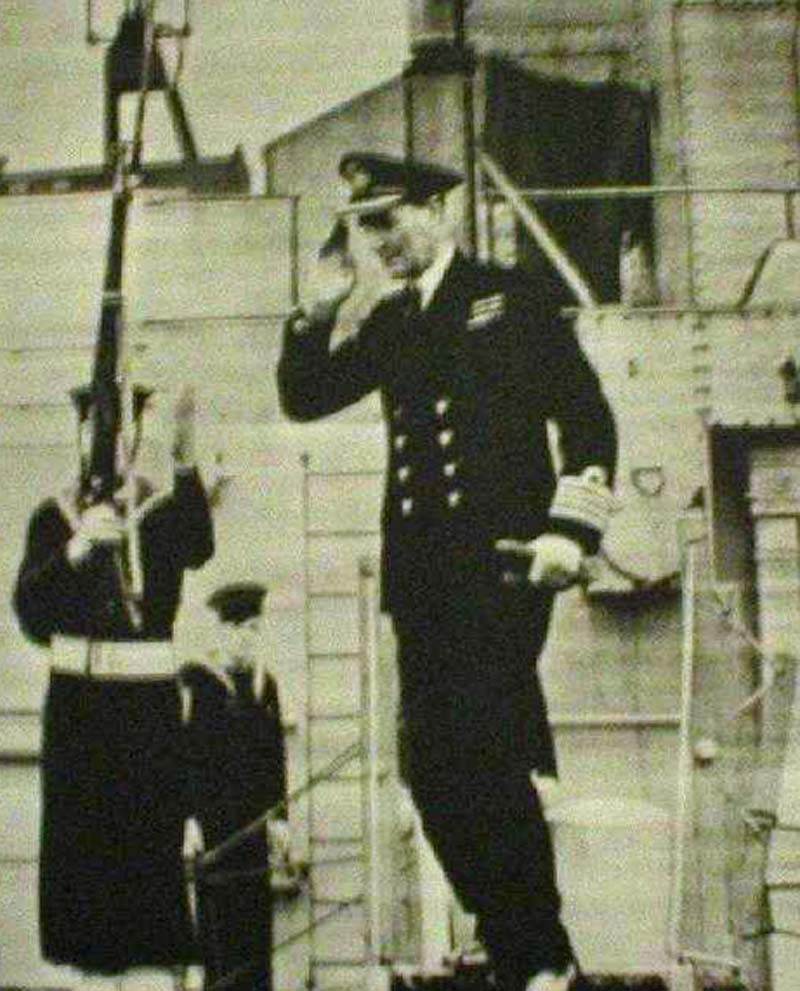 A photograph on the wall of the Ops Room showing Captain Johnnie Walker going ashore returning the salute by AB Burnett. |
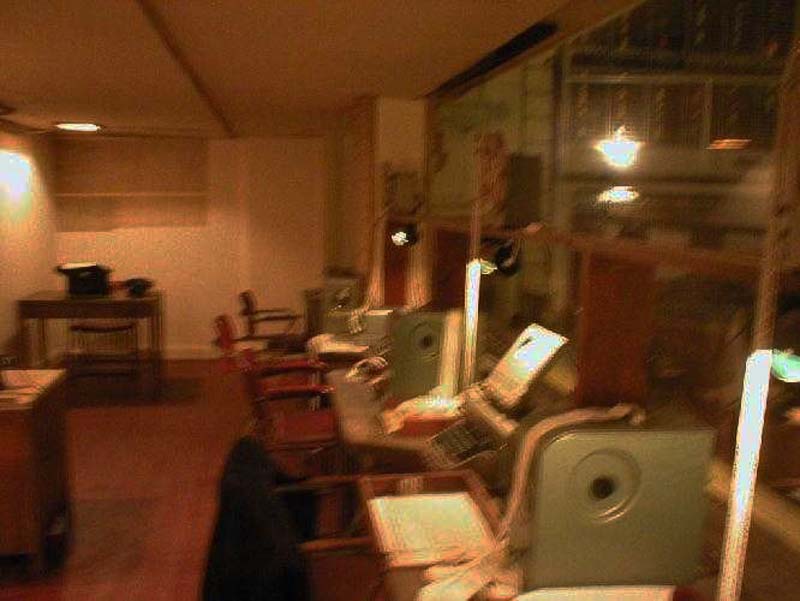 A bad image of the RN cabin facing the main Ops Room. The RAF cabin was next door. |
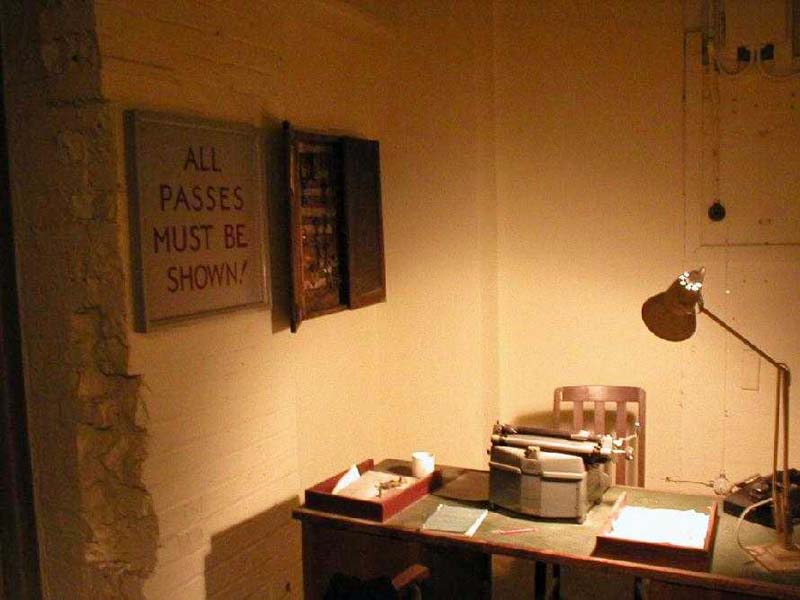 Yet another Security checkpoint! HQ Western Approaches was probably one of the most secure places ever, during WW2 and beyond. In fact nobody knew this place even existed until well in the latter years of the last century. Thousands worked above it daily and never knew, including me! |
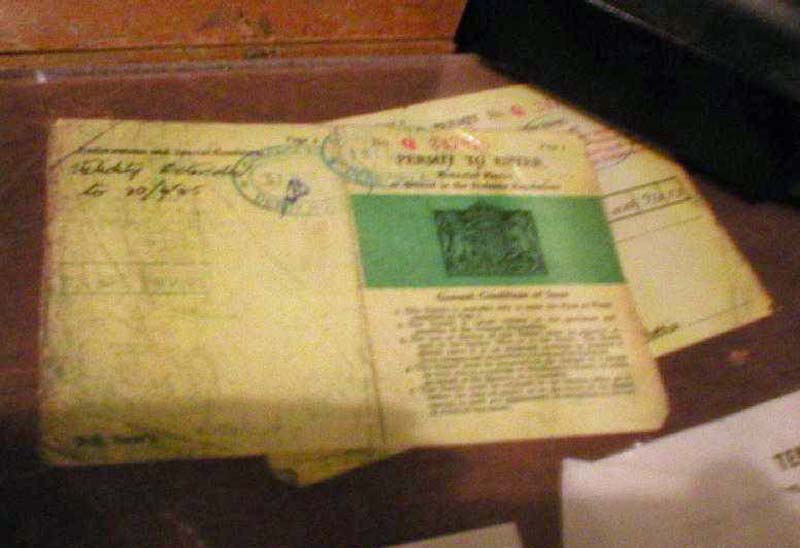 Without this pass you would not even be standing here, during the war. |
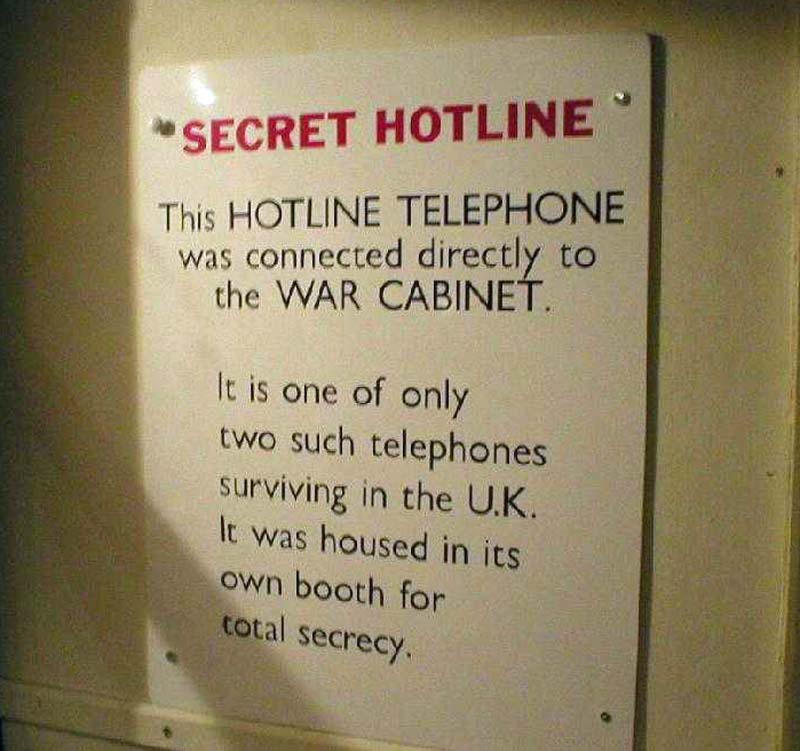 This sign describes the following image of the "hotline" to the War Cabinet. Whenever this was in use an armed guard would stand outside the door to ensure that nobody, whoever they were, approached whilst it was in use. |
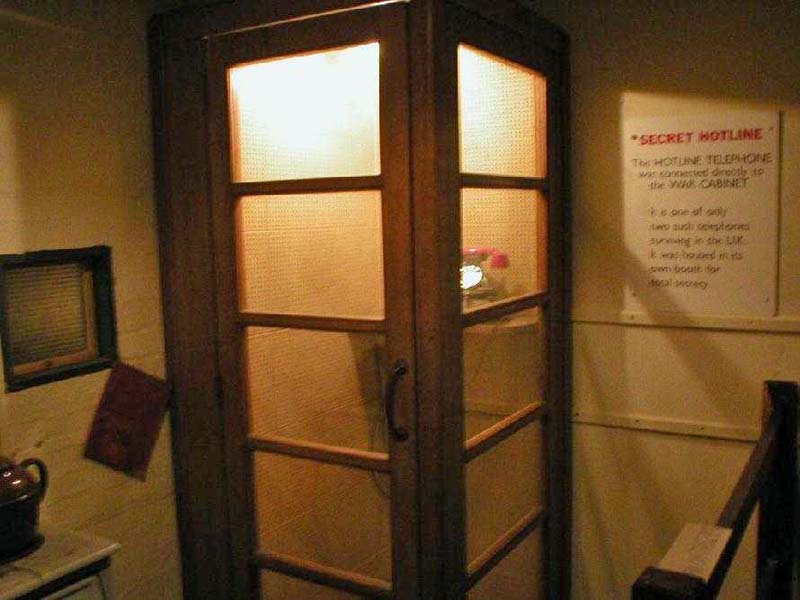 This was probably used mainly by the C in C himself to talk to either Churchill or to members of the War Cabinet directly |
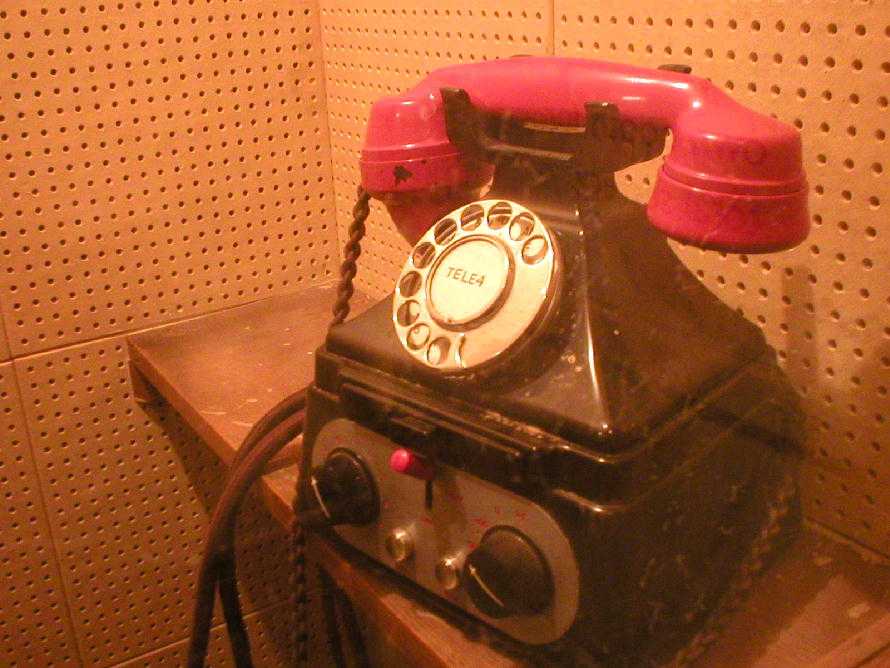 The phone in question |
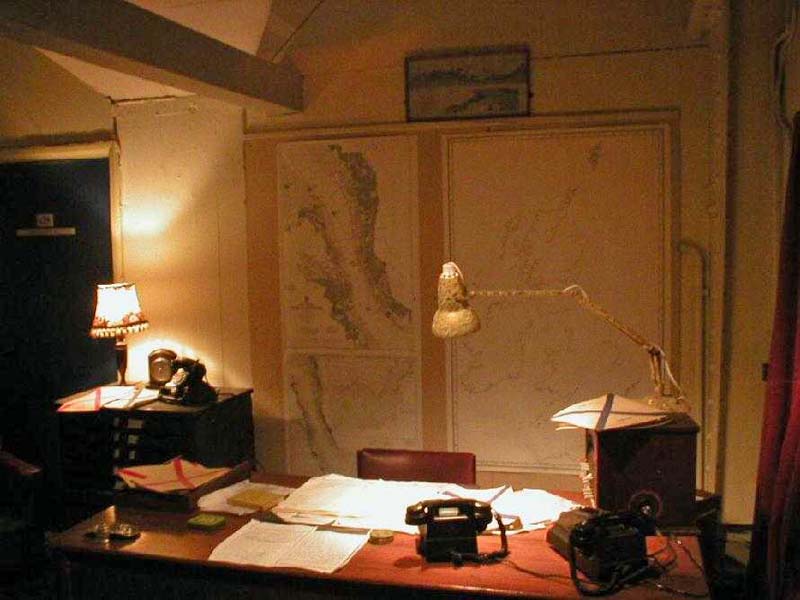 The first image of several depicting the office of the C in C as laid out during the tenancy of Sir Max Horton. An excellent voice over explains the room details. The folder in the tray with the red cross denotes a Top Secret file |
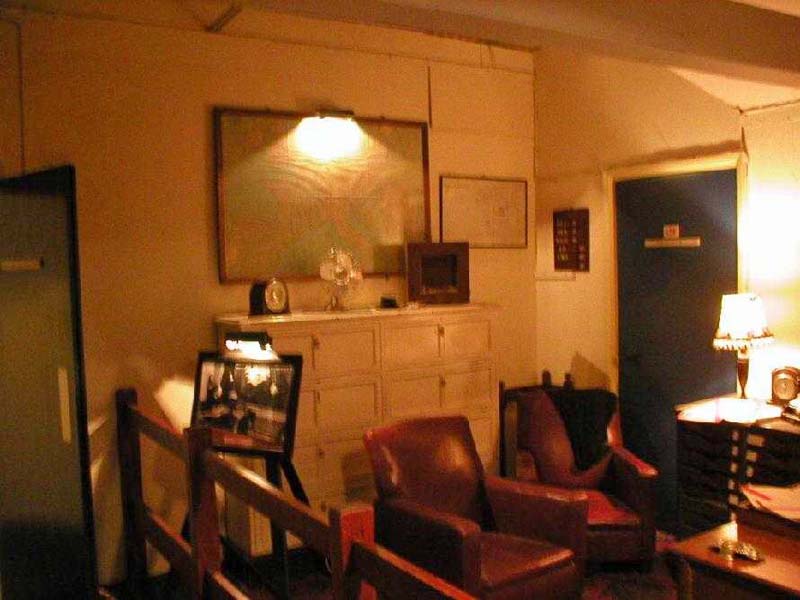 Another view of the C in C's office |
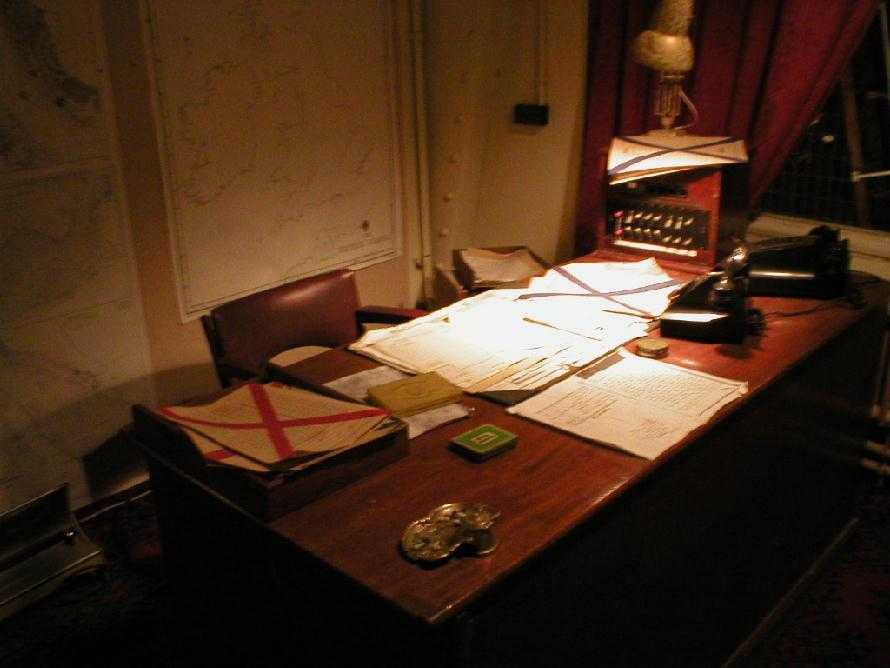 A similar view of the C in C's desk as in the above photograph. On his desk are sample files showing, Top secret and on the other side, Secret folders. One slight discrepancy I spotted. The Signal Message pads on his desk, and elsewhere, were of 1986 vintage and was used by me in the Army from that date. Obviously, they could not find original signal message pads from that era. There must be some - somewhere? |
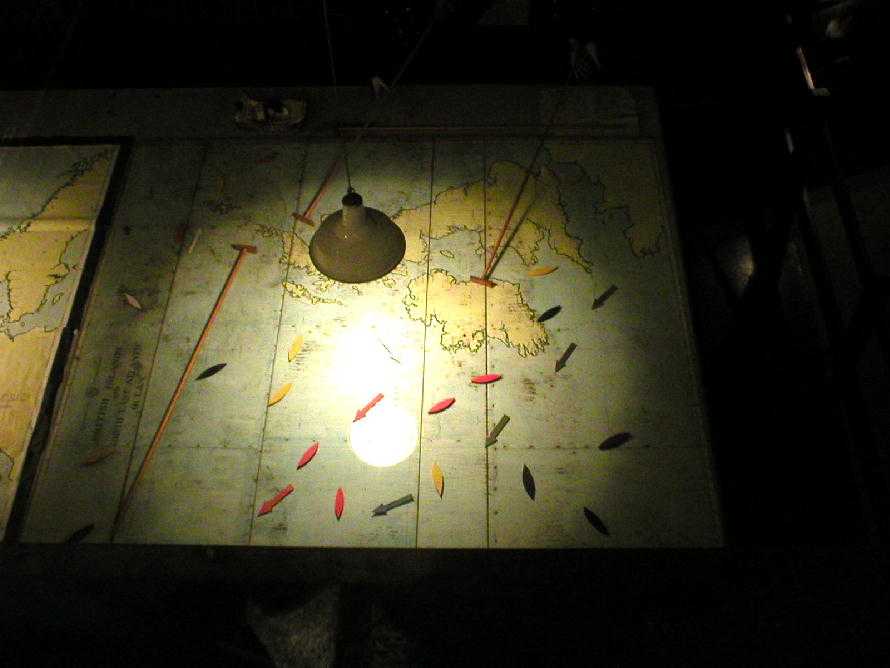 The view from Admiral Horton's window of the ongoing, ever changing plot. |
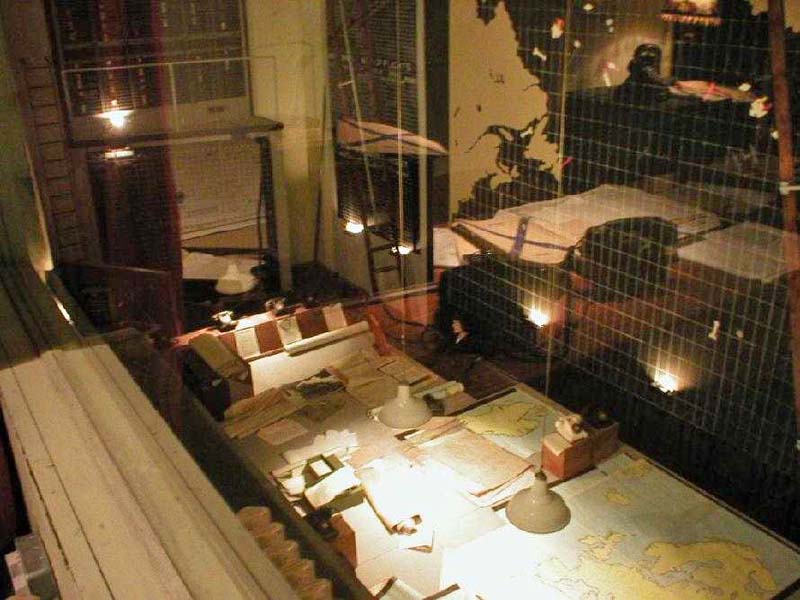 Another view from the C in C's window |
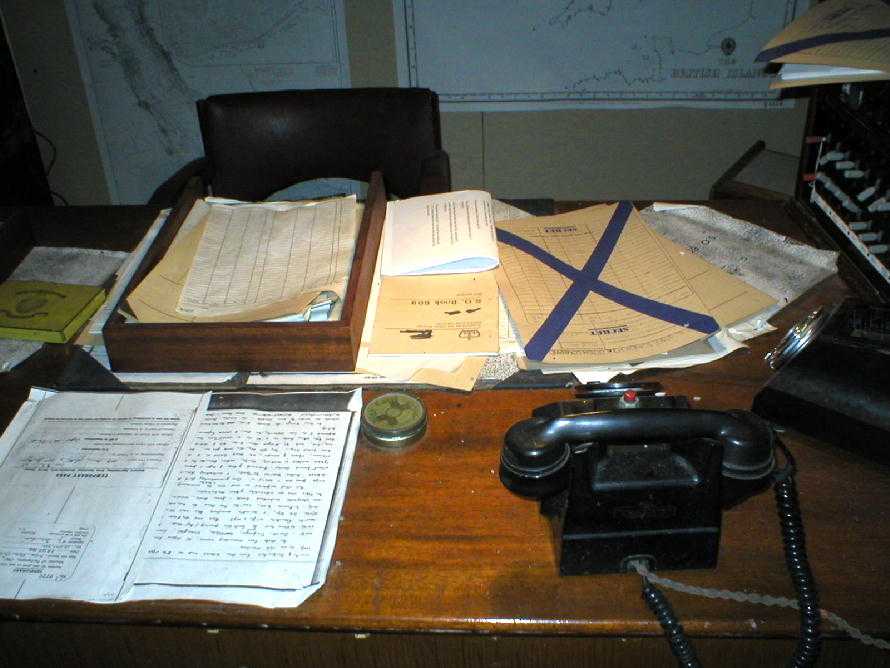 |
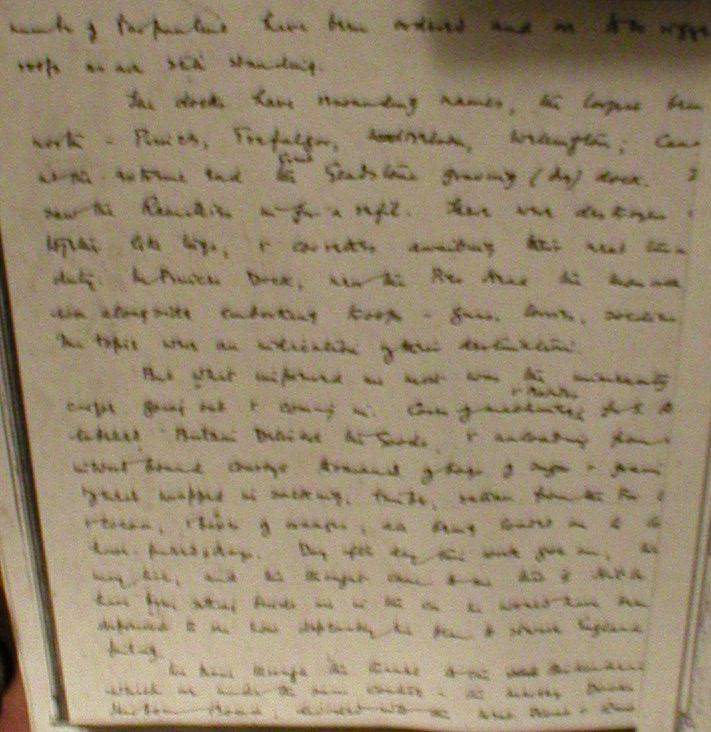 On the Admiral's desk is this hand written script but unfortunately I cannot get a good enough copy to read as I had to stretch over the rail to capture this one. 10 Sep 05. |
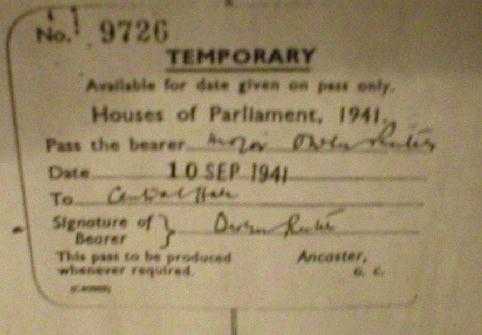 On the Admiral's Desk is a pass to the House of Commons in the name of a Major |
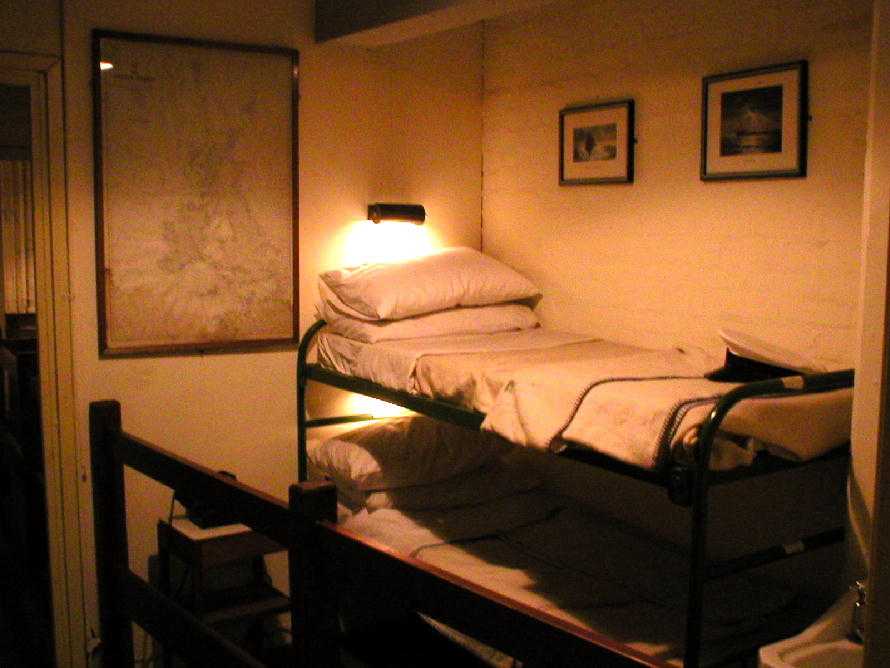 Admiral Horton's bunk, next door to his office |
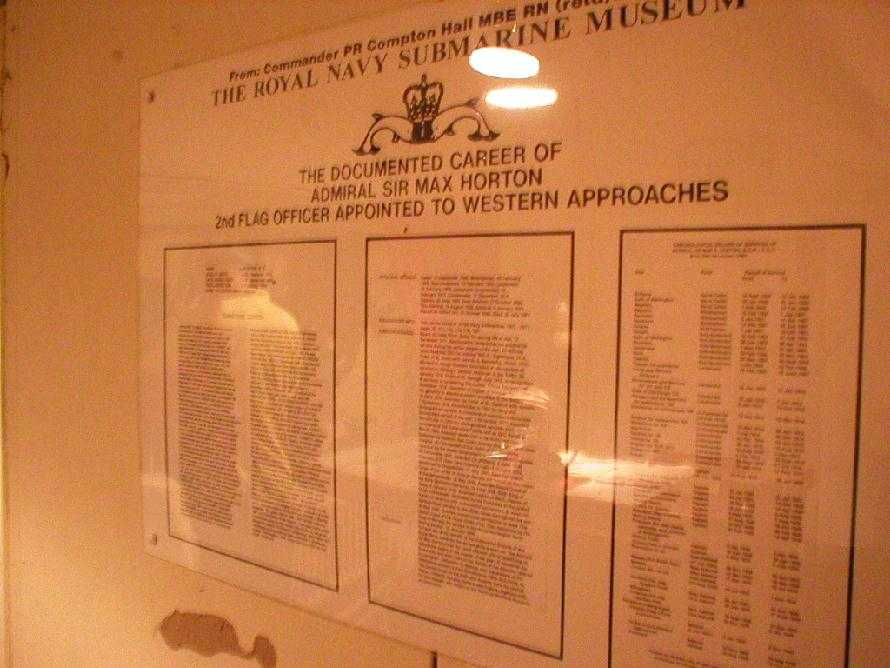 This plaque on the wall of Sir Max Horton's office, obviously not there when he served there, depicts the career of this Admiral. A very remarkable career indeed. He was a bit gruff with his staff but got the job done. |
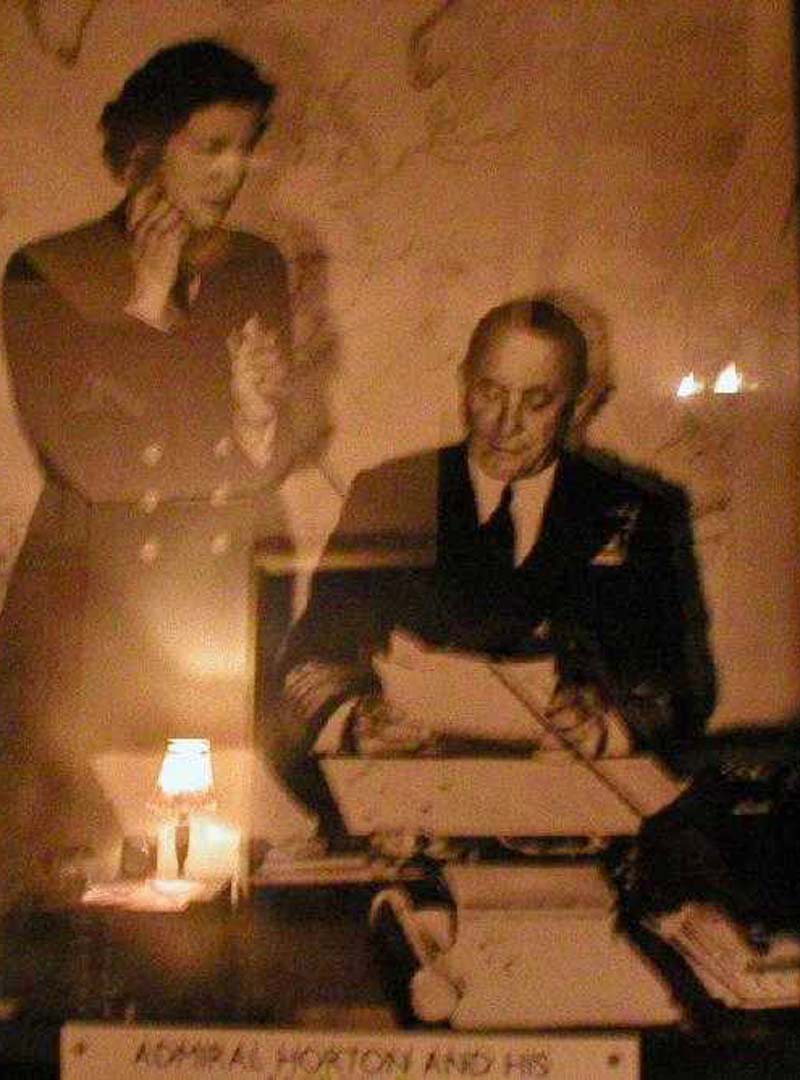 Admiral Sir Max Horton with his secretary. Another of the images depicting life in these bunkers. I wondered if this lady was still alive today? Then I received the following email on 18 Dec 04 from Michael French "The lady shown is Horton's Flag Lieutenant, a WRNS officer named Kay Hallaran, of Irish descent and brought up in the USA, her home being in Cleveland, Ohio. According to Captain (S) E. Haslehurst, "She had so much tact and charm of manner that she was able to handle impatient senior officers much more effectively than any male junior officer could have done. I doubt if Sir Max ever realised how much she did for him. He never showed much consideration for his staff and she carried out an exacting job with immense patience and cheerfulness. After the war she returned to Cleveland, Ohio, and died soon after while undergoing an operation" |
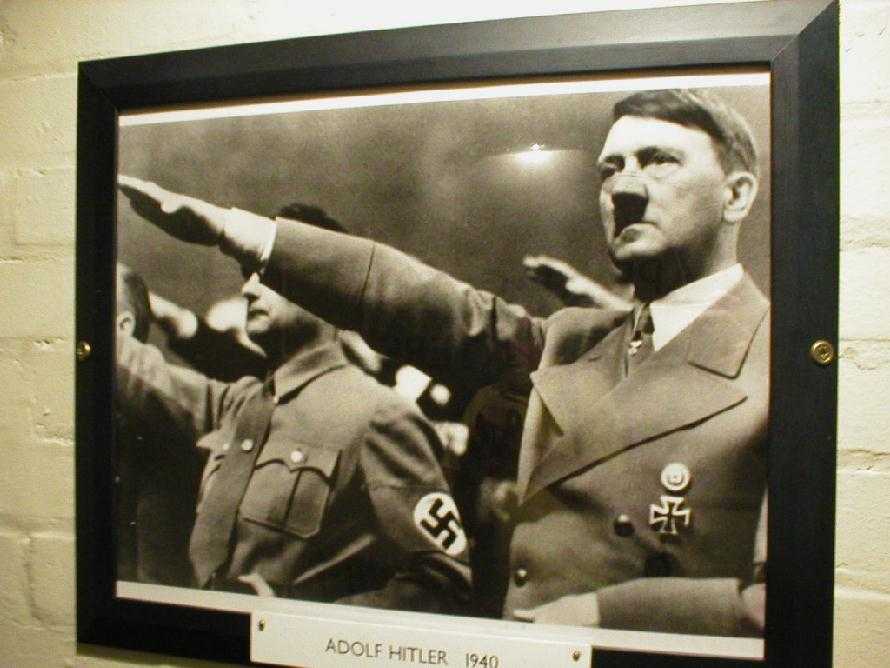 On the corridor wall, outside the C in C's office is this image of Adolph Hitler in 1940 and next to it is a picture of Winston Churchill. |
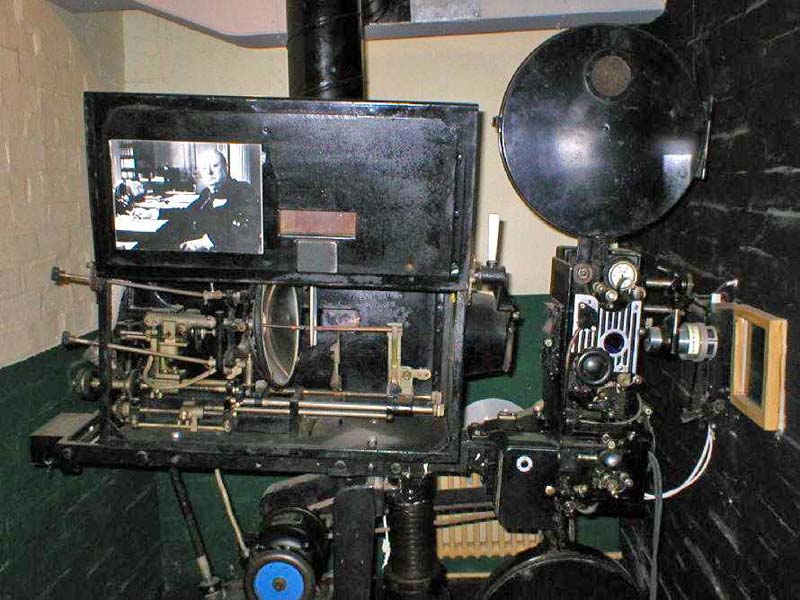 A projector, like the type used to show Winston, on his visits, secret wartime footage, probably taken from HM ships in action. Explanatory plaque is below. |
 This plaque explains the next image |
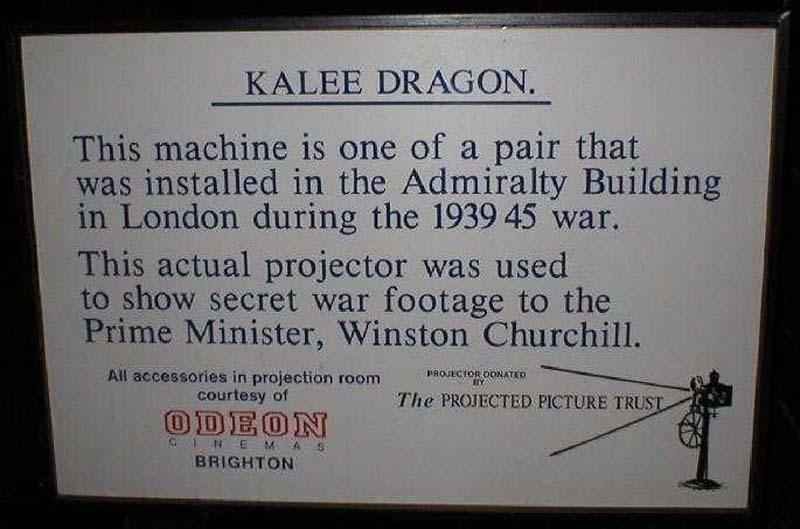 |
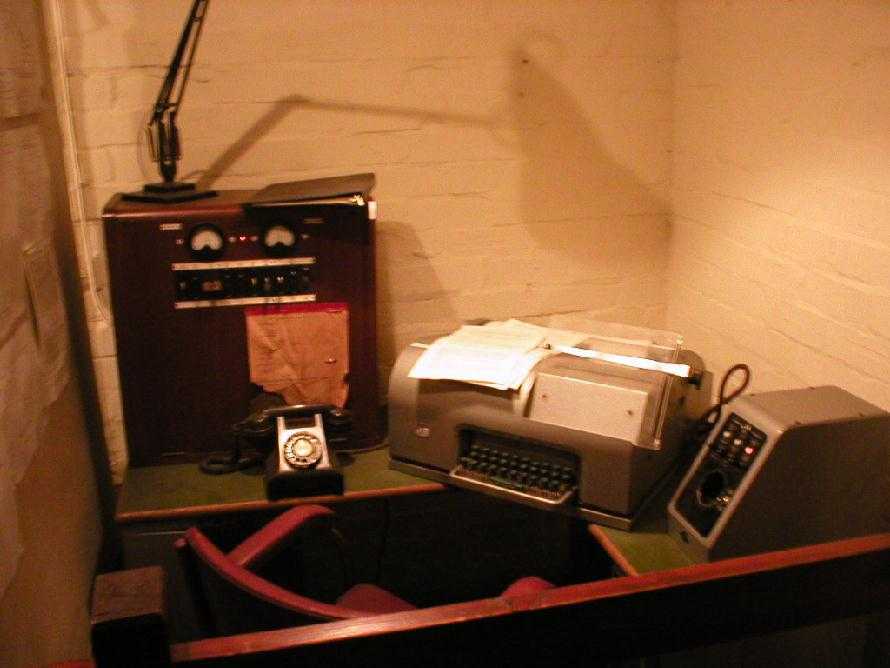 the decoding rooms just around the corner from the projection room |
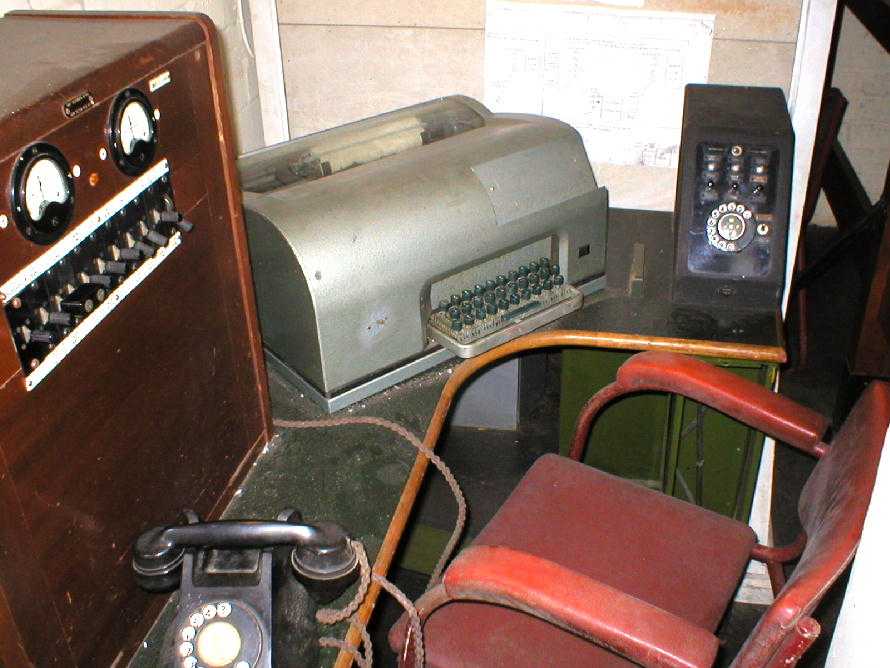 Telex |
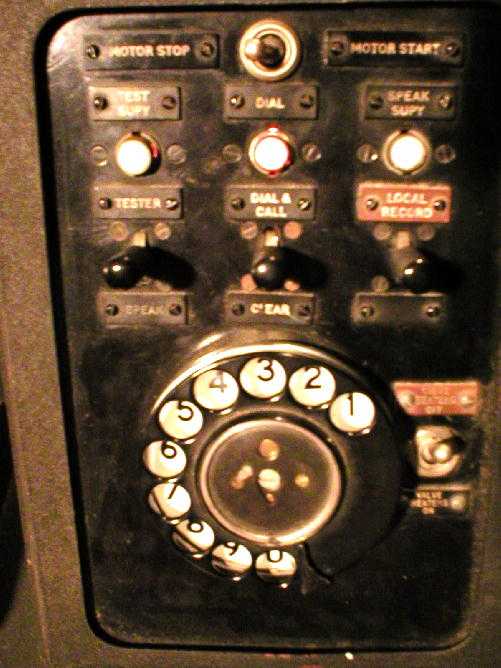 Telex switchgear |
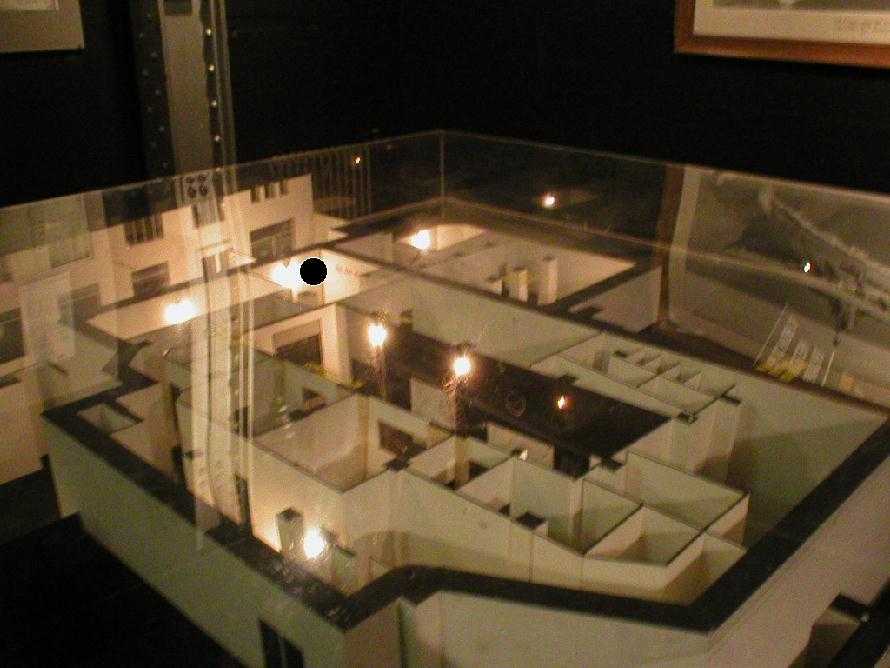 Scale model of the complex, black spot denotes where this image was taken from |
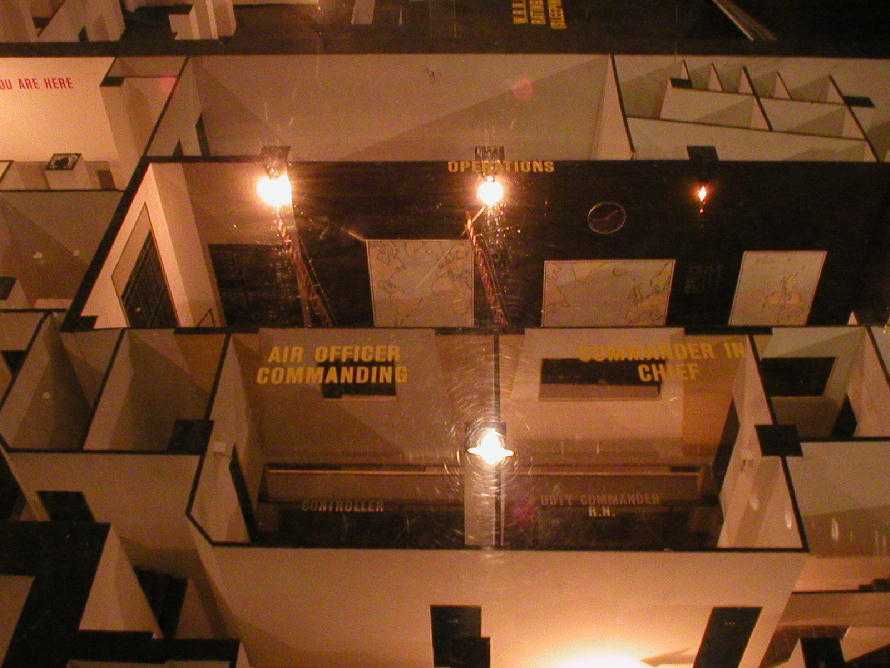 Closer View |
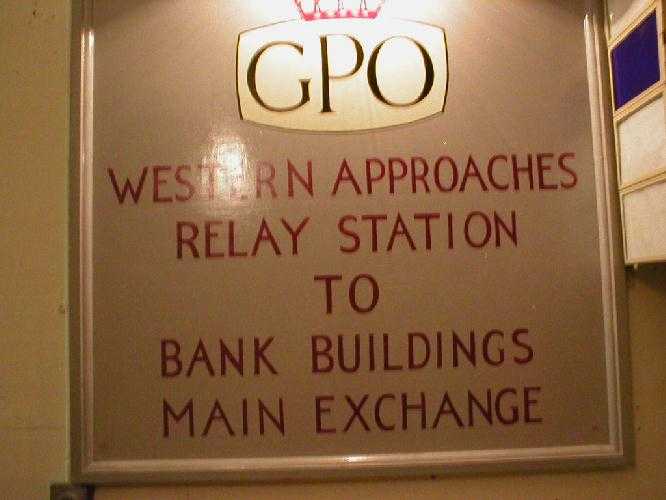 Western Approaches Relay Station Plaque |
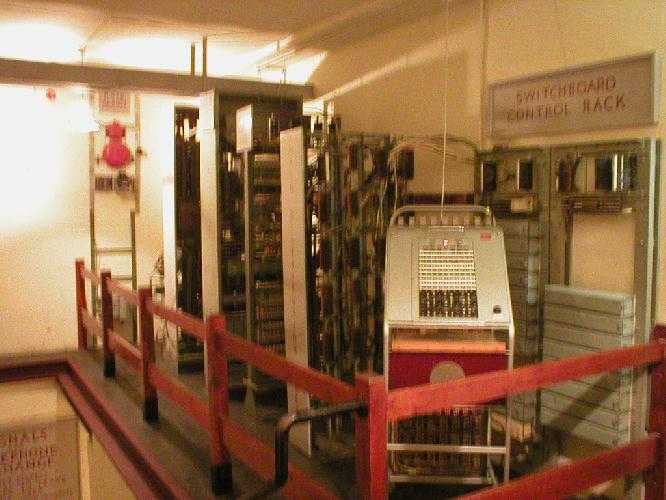 and the room it depicts |
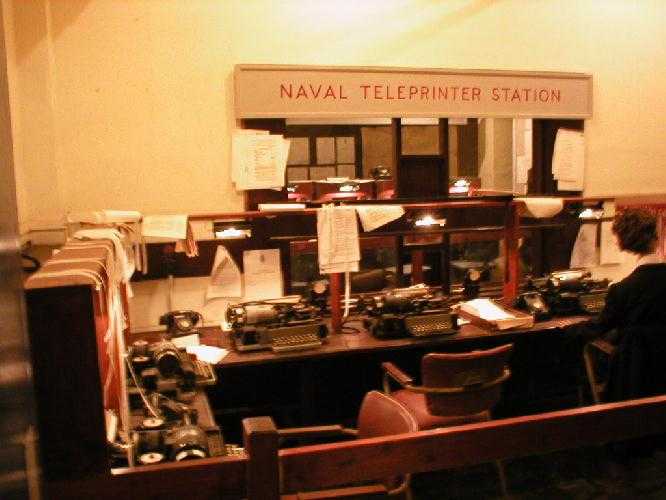 The Royal Naval Teleprinter Station |
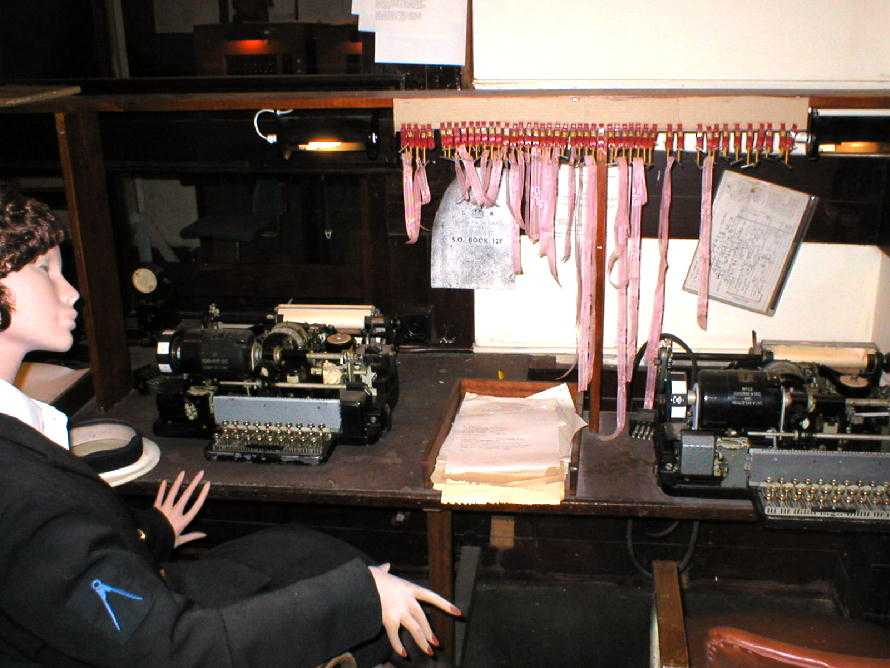 with another aspect of the same and |
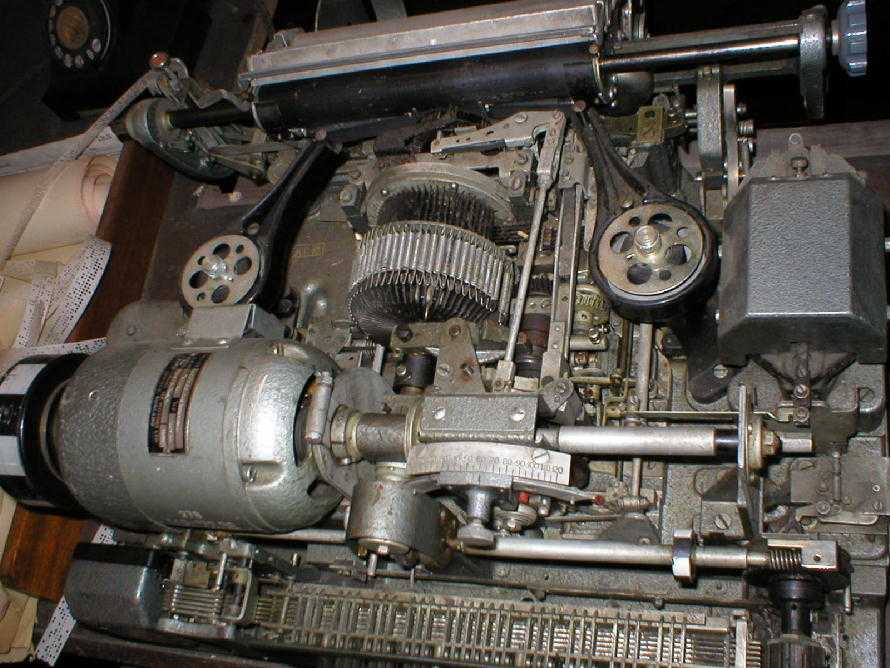 One of the original teleprinters. Hanging on hooks are teleprinter ribbons as used. Apart from the technology, I was still using these tapes in Omagh in 1974, in the Ops Room of 1st Royal Tank Regiment. In a short time I was actually able to "read" some of the ribbons as I could spot the patterns of the letters. |
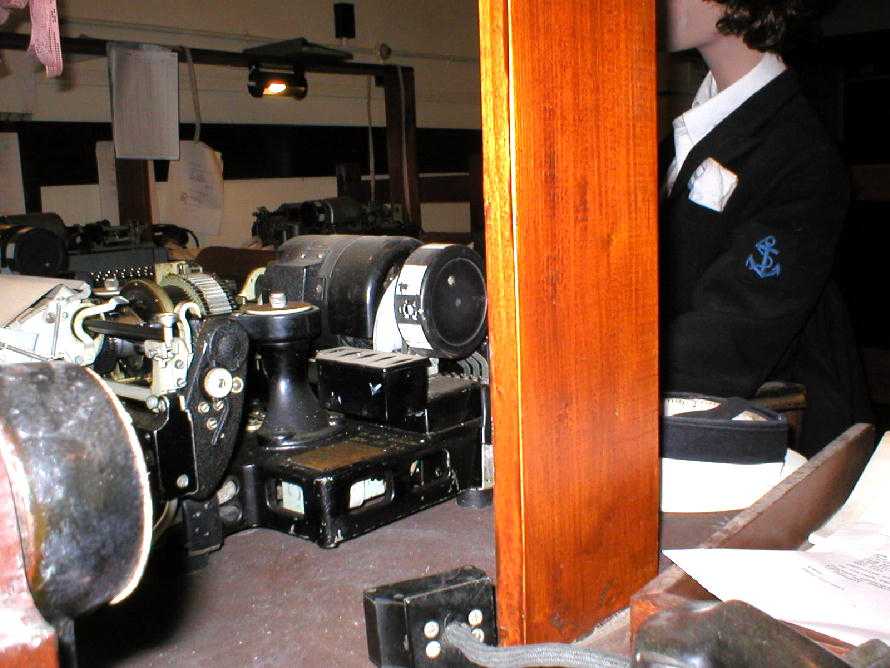 and from the hatchway |
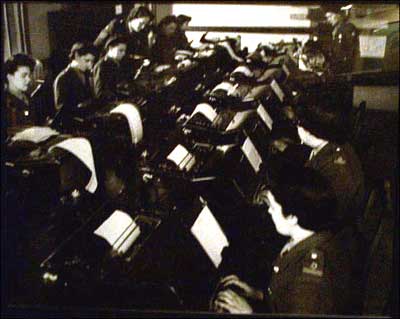 The printer room in WW2, with the girls hard at work. |
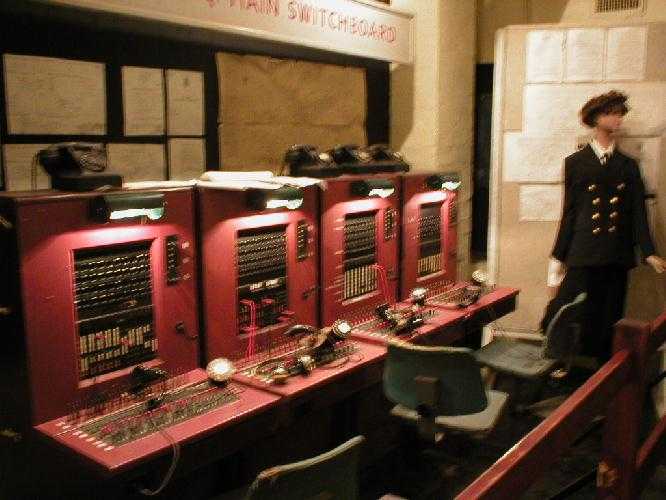 The main switchboard. Another voice over explains that one of the girls was caught making a personal phone call. Her promotion interview was the next day! She was panicking! At the interview, no mention was made of the call, she got promoted, and needless to say, never made another personal call! The far panel was the one in which incoming calls from Churchill and the War Cabinet came in on. |
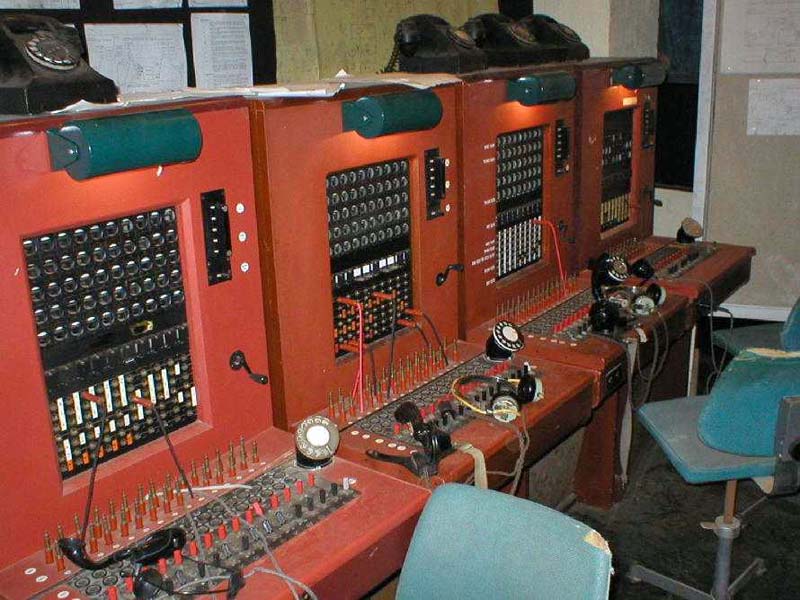 |
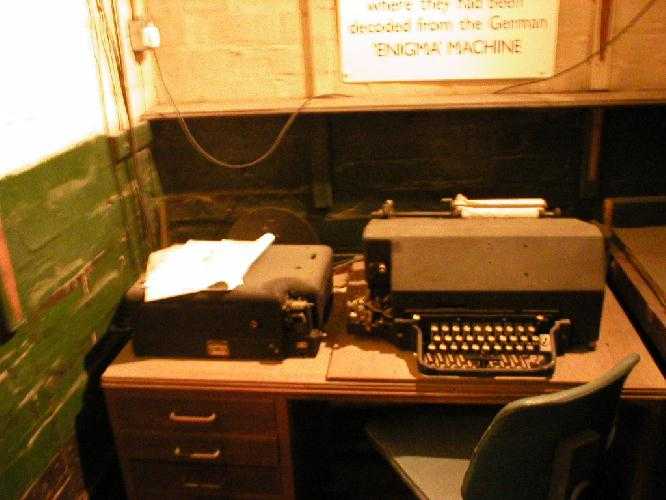 This machine was used to relay the coded messages as read by Bletchley Park's enigma code breakers. Extremely important, hundreds of lives were held in the balance on how quickly the revealed information could be got to the relevant commanders in the "field". |
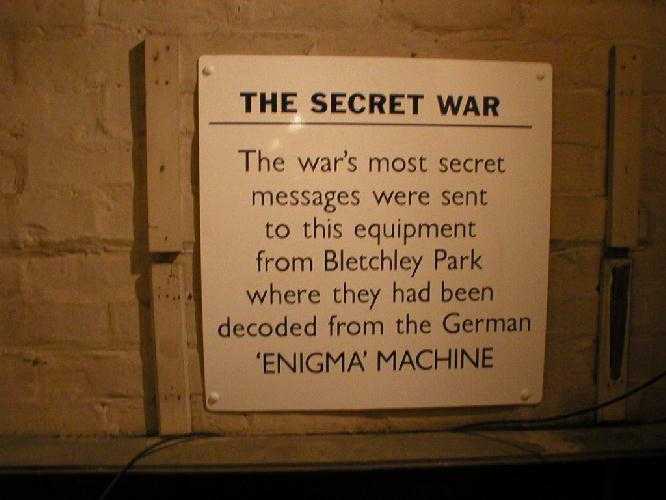 |
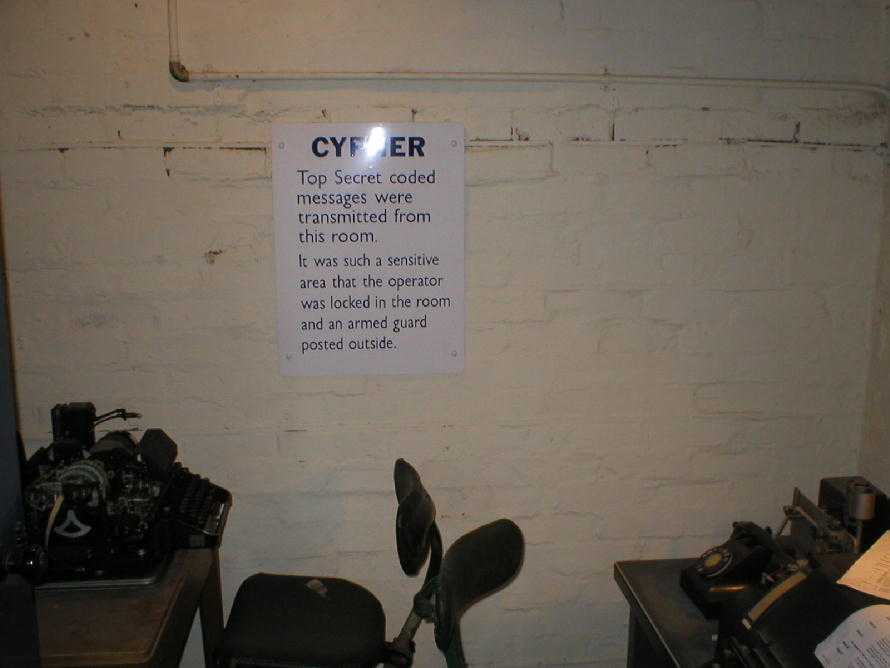 Top Secret Transmission Room - Signals from Bletchley Park were received here giving details of U Boat movements in the main |
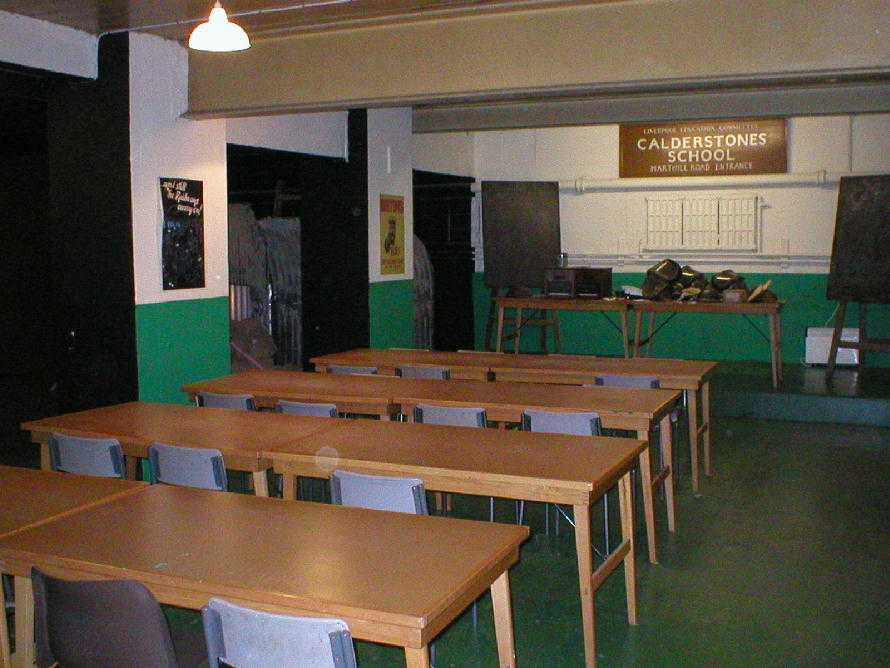 Canteen. I have no idea why a school sign hangs there? |
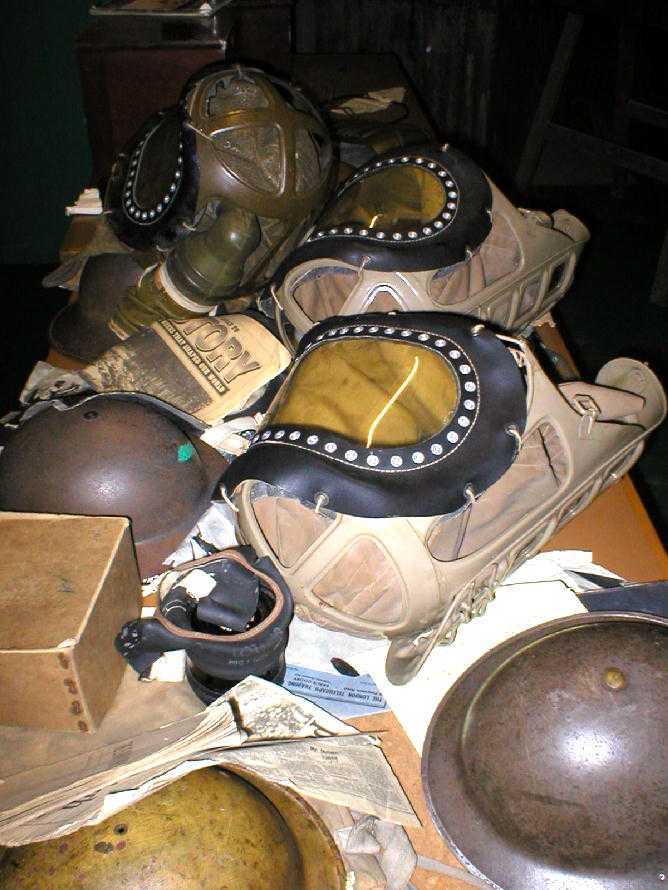 On a table in the canteen a collection of gas masks and tin helmets |
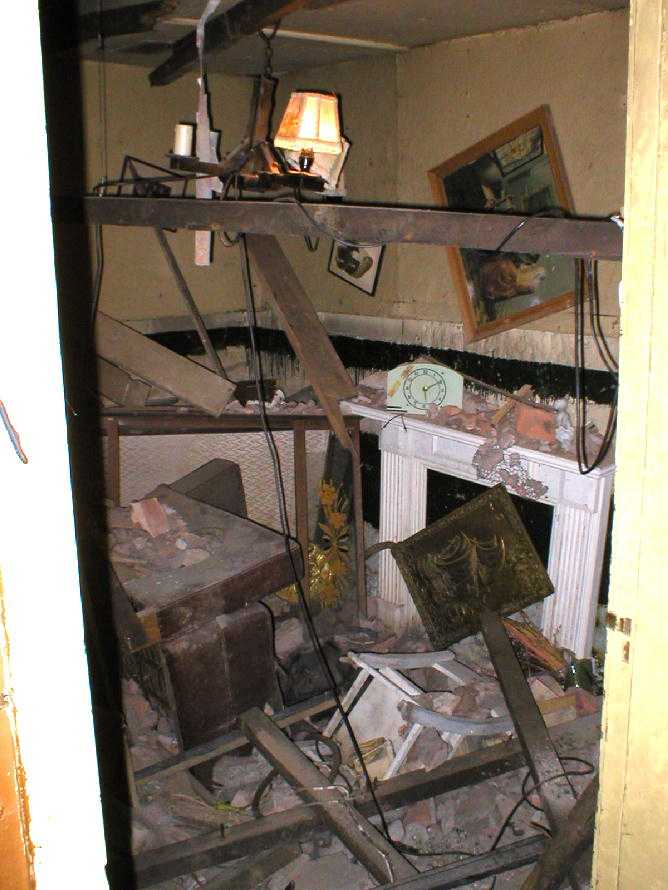 |
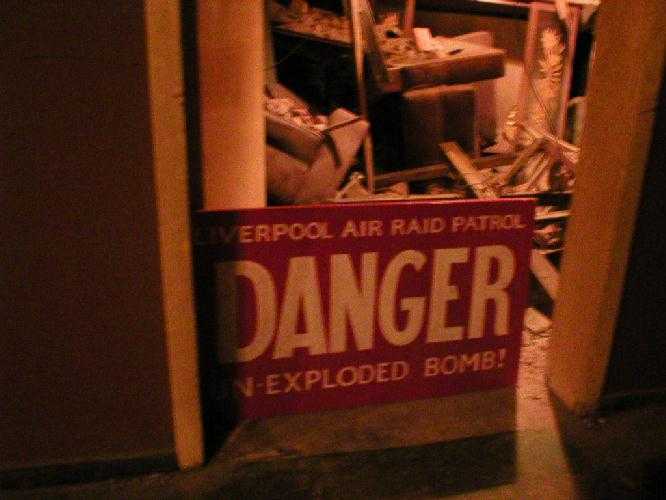 Re-enactment of bomb damaged house and the sign stating an unexploded bomb is here |
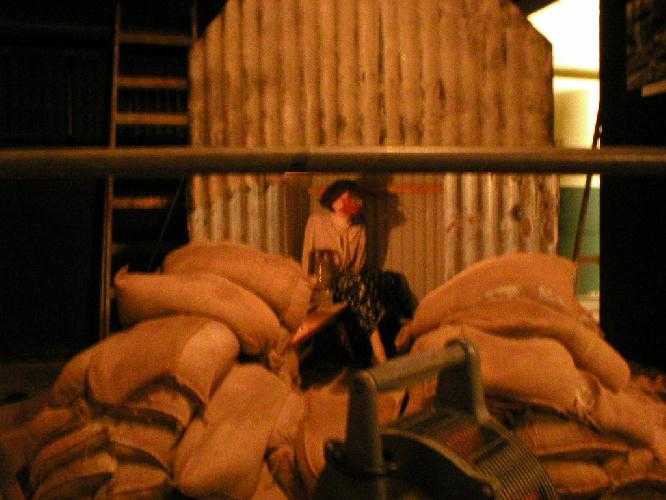 Anderson Shelter and someone sheltering inside wearing gas mask. Whilst the men and women were conducting the Battle of the Atlantic below ground, this was going on above ground during the period of the "blitz" |
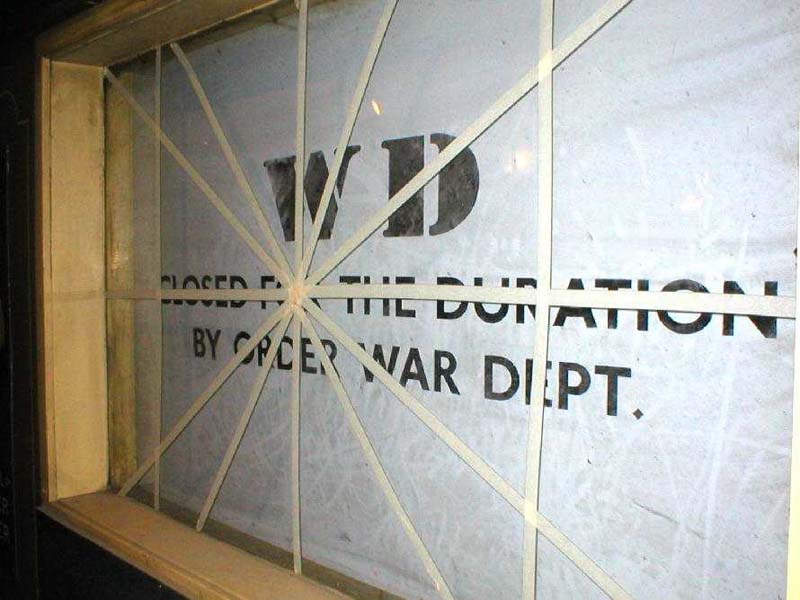 Shop front showing "duration" closure |
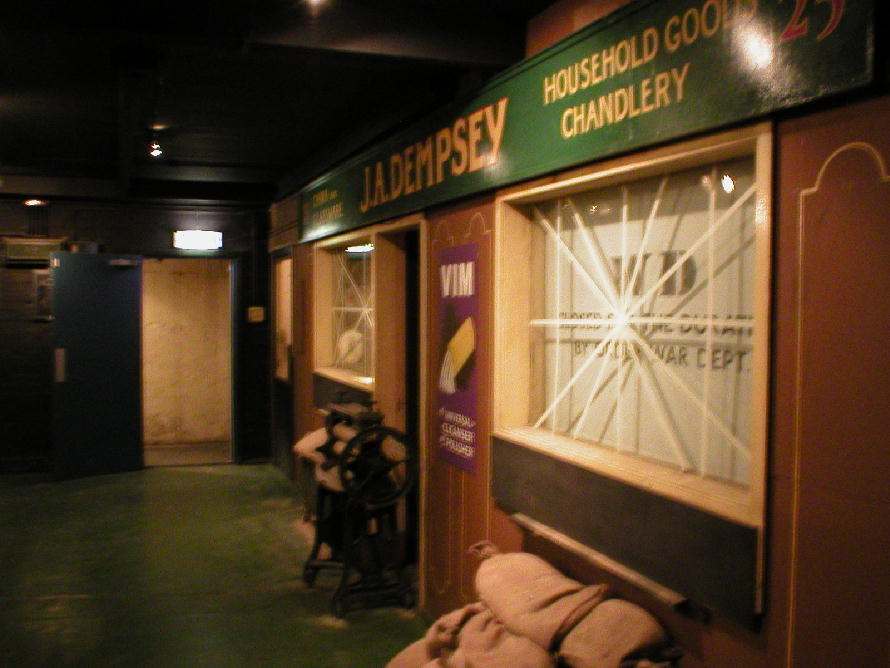 A longer shot of same. 10 Sep 05 |
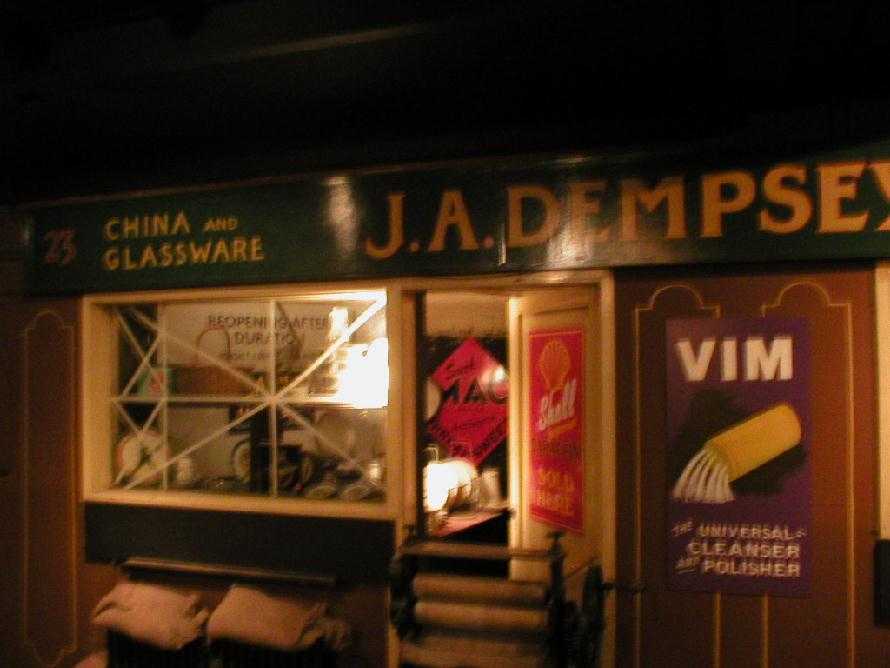 An example of a typical shop of the period showing posters and advertisements. |
Close up of doorway |
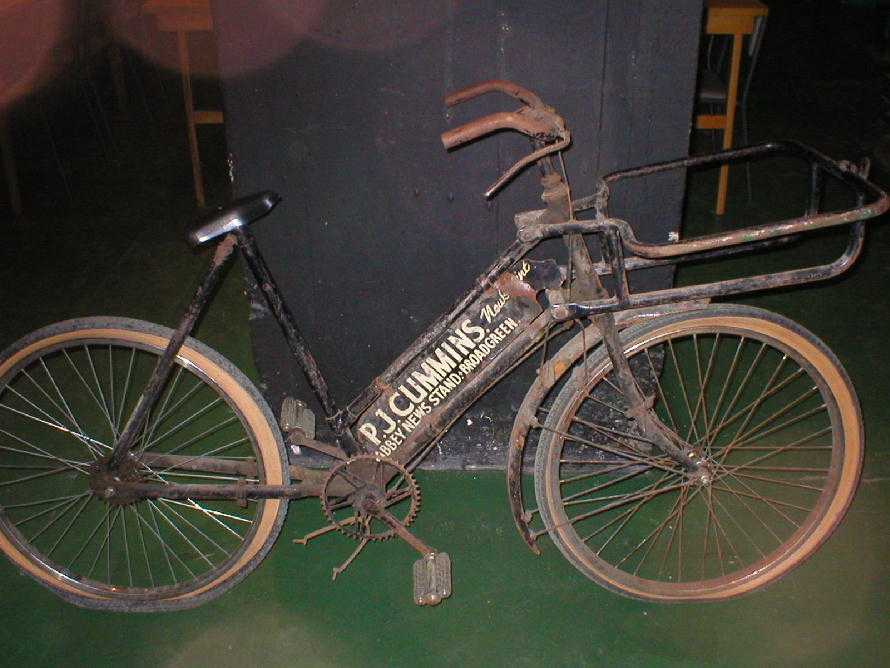 A Broadgreen (Liverpool) newsagents cycle |
Catalina PBY flying boat. Image on wall. 10 Sep 05. I think this is taken in May 1945 and the U Boat is surrendering |
Meanwhile - above the ground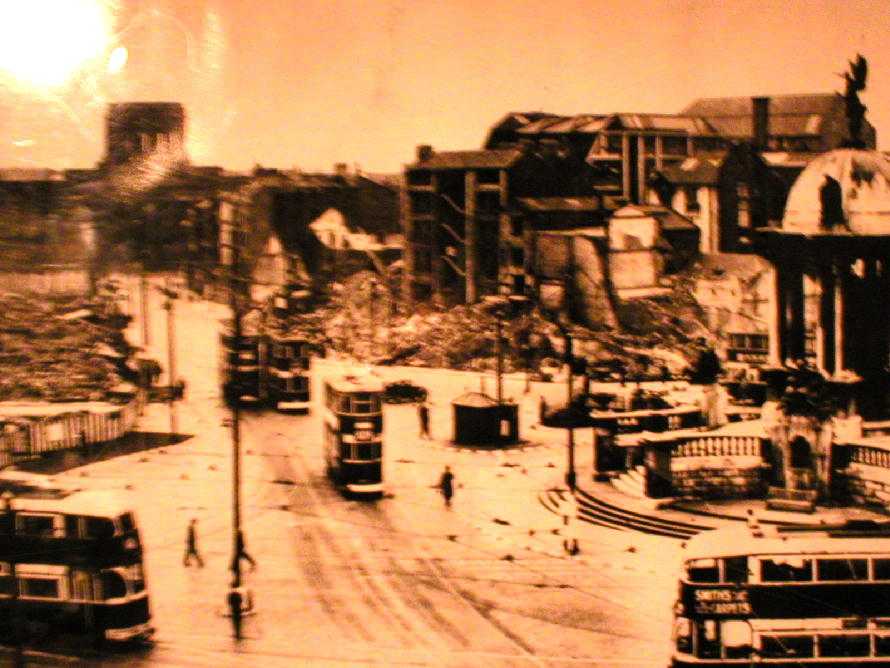 Image of Liverpool showing demolished Customs House. A friend and I have had a discussion about the point the camera was at taking the image. I said James Street but now we know. Its actually Castle Street, of South Castle Street. The building in the background is the Customs House. |
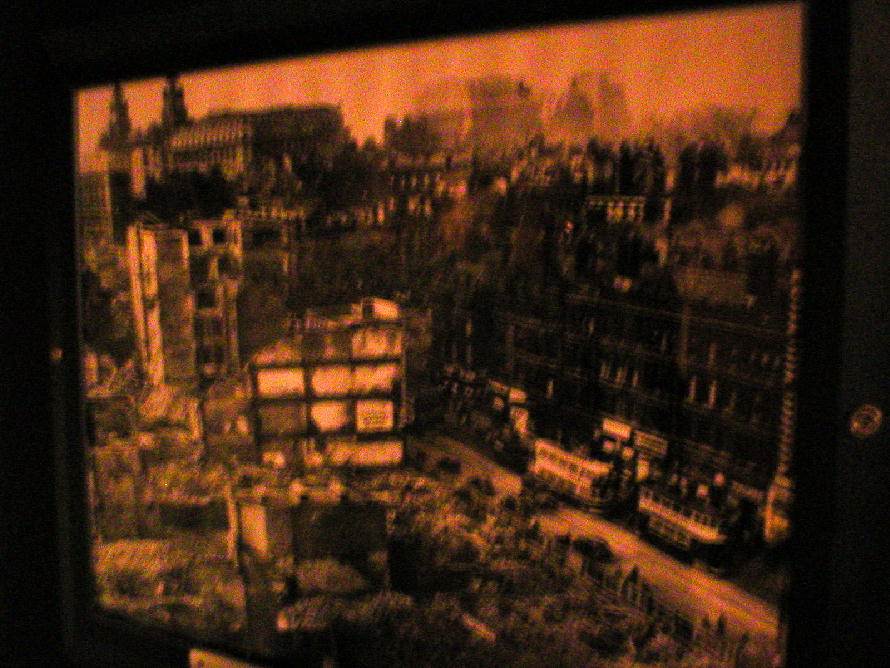 Image of the devastation to area of Lord Street. Liver Buildings and India Buildings prominent in background, to right of India Buildings will be Derby House and this HQ. 10 Sep 05. |
|
A bunker was built in Derby House, which became known locally as the “Citadel” or “Fortress” due to the extensive reinforced concrete protection given to the basement. It was bomb proof and gas proof, with a 7 foot thick roof and 3 foot deep walls, and 100 rooms covering 50,000 square feet. The Royal Navy, Air Force and Marines worked together in the bunker to monitor enemy convoys and “wolf packs” of submarines, which threatened to destroy Britain in the earliest stages of the war. The goings-on in the bunker played a huge part in the victory of the Battle of the Atlantic, having successfully imported supplies into wartime Britain from the sea. Victory at the Battle of the Atlantic was essential for Britain to survive; the invasion of Europe in 1944, which instigated the beginning of the end for Germany, could not have occurred if the U-Boats had succeeded during the Battle of the Atlantic. Only after the war did Winston Churchill confessed that it was the Atlantic that concerned him the most: “The only thing that really frightened me during the war was the U-boat peril.” The greatest challenge, Churchill felt, was to manage strategy around the Atlantic shipping routes which required “statistics, diagrams and curves unknown to the nation, incomprehensible to the public.” During the war, three different men held the position of Commander-in-Chief for Western Approaches Command. Admiral Sir Martin Dunbar-Smith was Commander-in-Chief in Plymouth, and remained so during the changeover to Liverpool. Admiral Sir Percy Noble held the position from 17 February 1941 to 19 November 1942 and Admiral Sir Max Horton, who was given the Freedom of the City of Liverpool after the war, was Commander-in-Chief from 19 November 1942 until Western Approaches Command closed on 15 August 1945. His dynamic leadership played a vital role in the final defeat of the U-Boat menace. (Captain Johnny Walker was based in Liverpool and operated his highly successful hunter killer group from Gladstone dock.). He was also basically chief advisor to Admiral Horton and reported directly to him after each patrol. - mk) In the Second World War, Liverpool was Britain’s main convoy port and helped to maintain Britain’s relationship with the United States and Canada – a lifeline which was crucial for Britain’s survival and the ultimate Allied victory. During the course of the war, over 1,000 convoys arrived on the Mersey. Many warships and merchant ships were repaired and built on the Merseyside, and thousands of ordinary Liverpool people were involved in the war effort. The first German bombs landed in Merseyside on 9 August 1940 at Prenton, Birkenhead. In the following sixteen months, German bombs killed 2,716 people in Liverpool, 442 people in Birkenhead, 409 people in Bootle and 332 people in Wallasey. Today, the wartime bunker has been restored to exactly how it used to be and is open to the public as a memorial to those who died to save Britain and the rest of Europe. Visitors take a step back into history in the original building where the battle was fought and won.
extract from:
http://www.liverpoolwarmuseum.co.uk |
|
| The following are examples of posters displayed in the HQ Western Approaches various rooms. The exception being the last one which was taken at the Maritime Museum, Albert Dock, Liverpool. 8th July 2003. The "Britons" poster seems somewhat out of place as its origins are WW1 vintage. As is the RAF poster showing WW1 biplanes. A relatively "saucy" one is shown asking men to join the Navy! One in French - its actually Canadian, a call to arms. | |
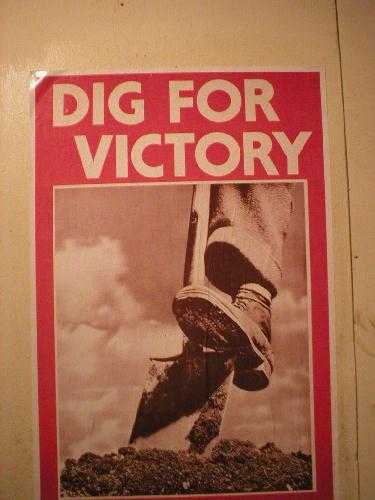 |
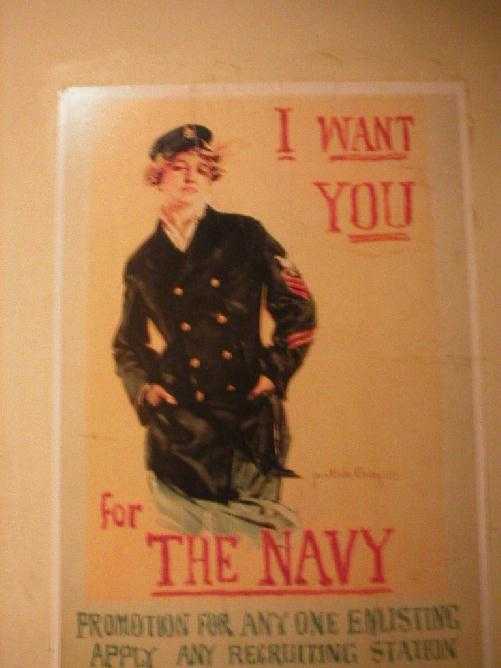 |
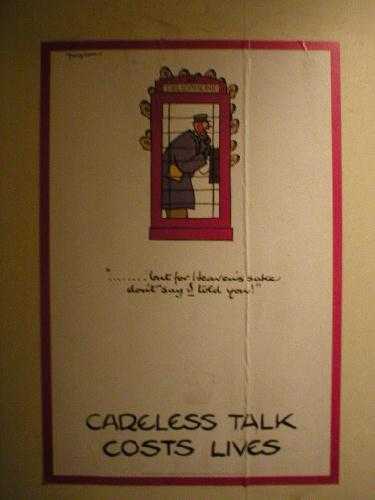 |
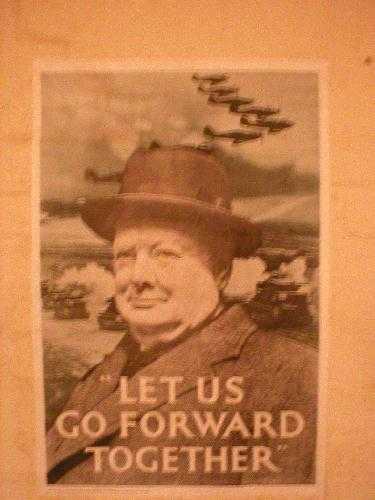 |
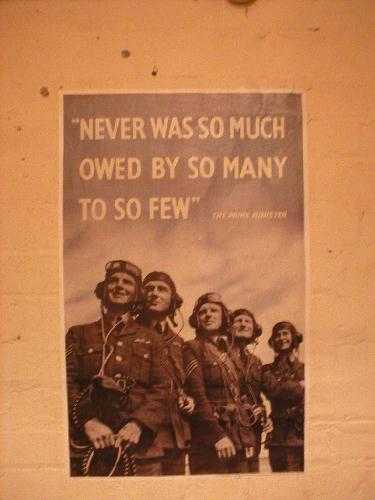 |
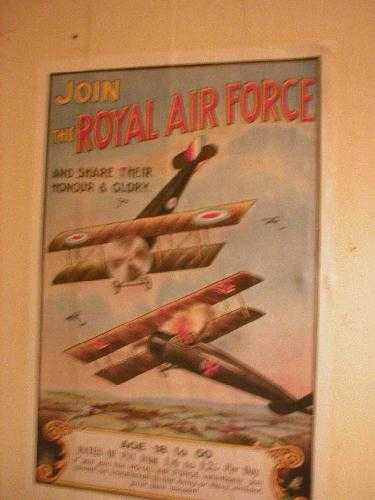 |
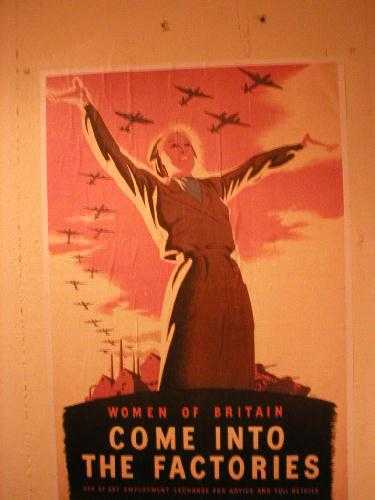 |
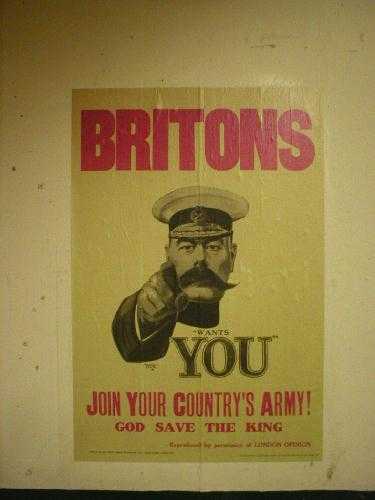 |
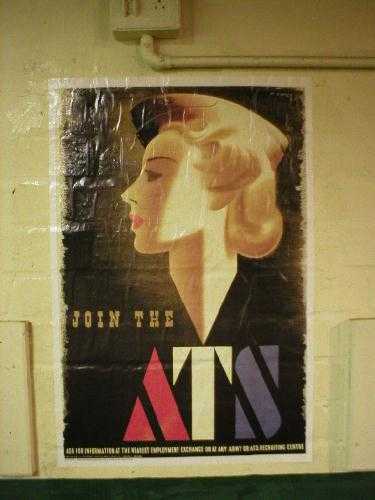 |
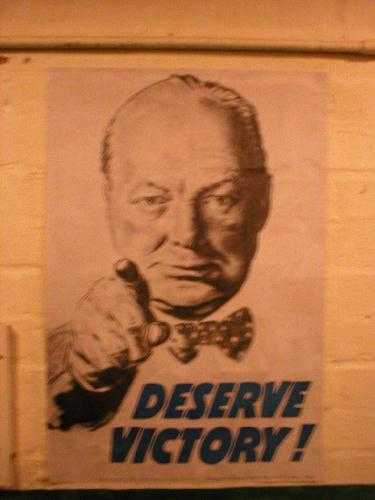 |
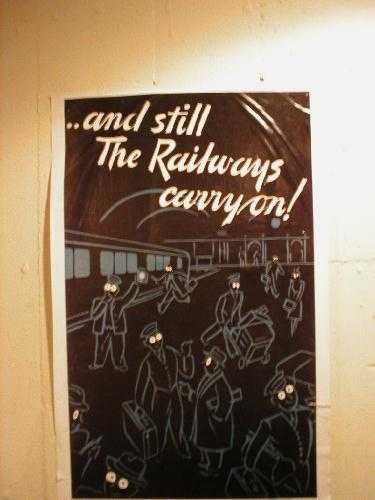 |
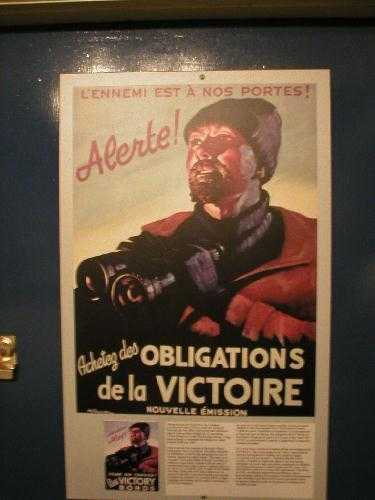 |
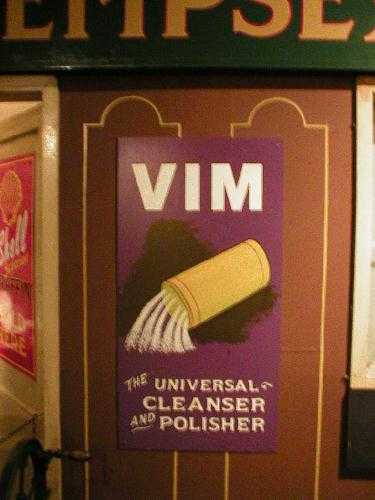 |
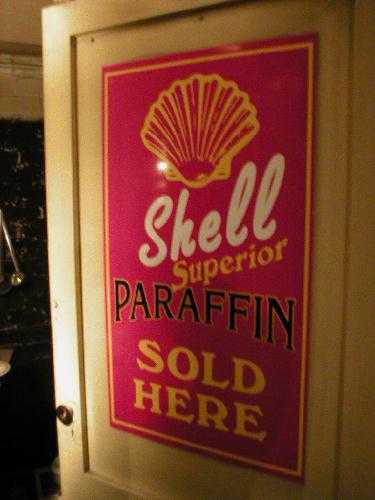 |
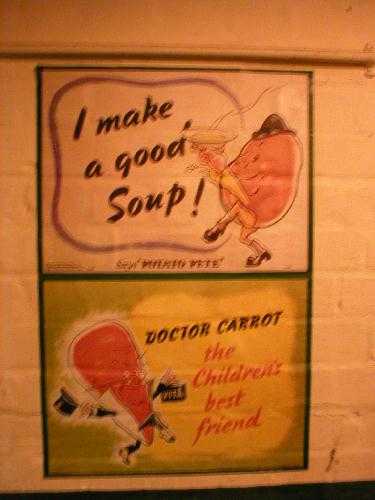 |
|
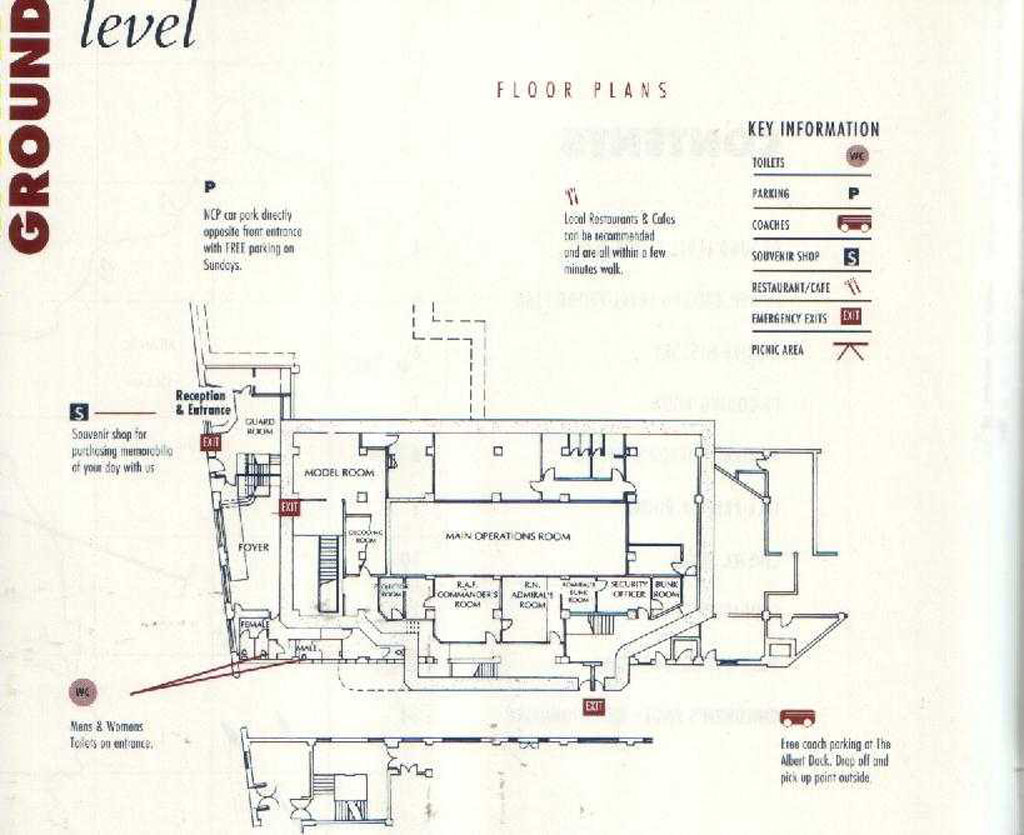
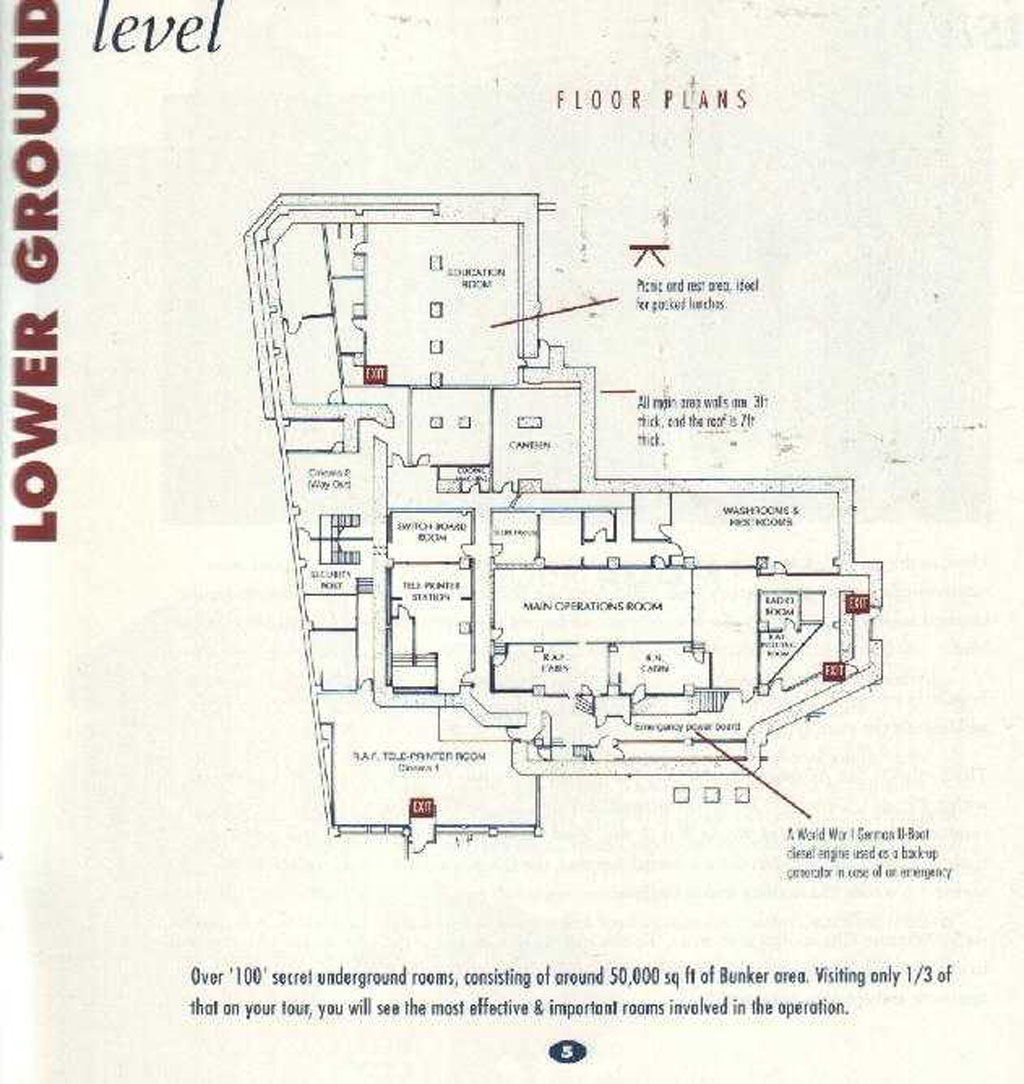
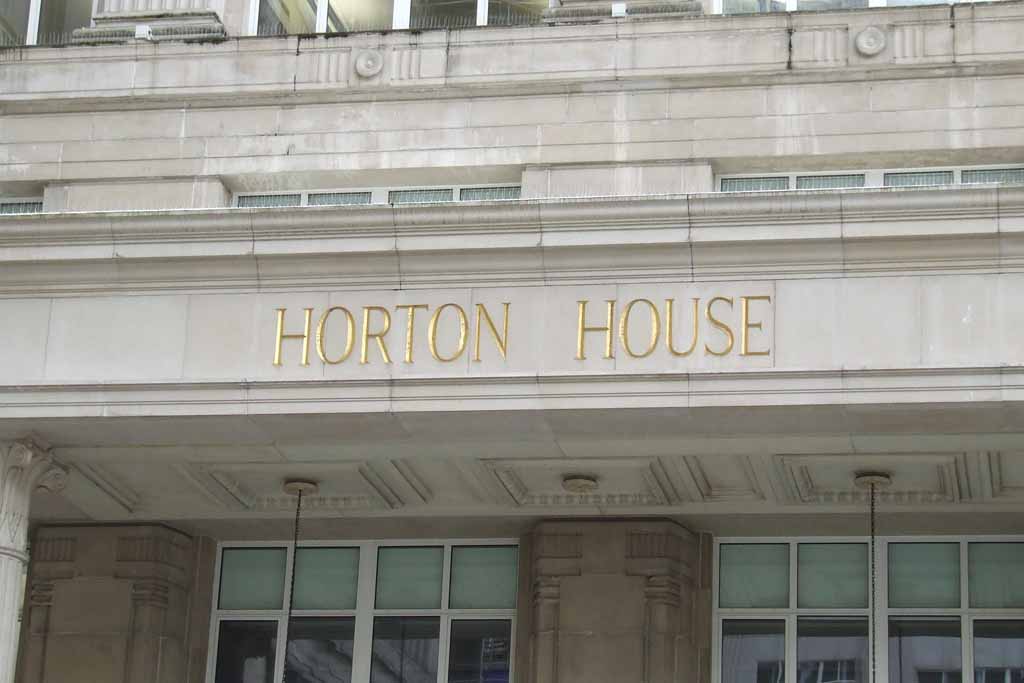 Delighted to see this in Exchange Flags on 10th Sept 2008, named after Admiral Sir Max Horton and ................................... |
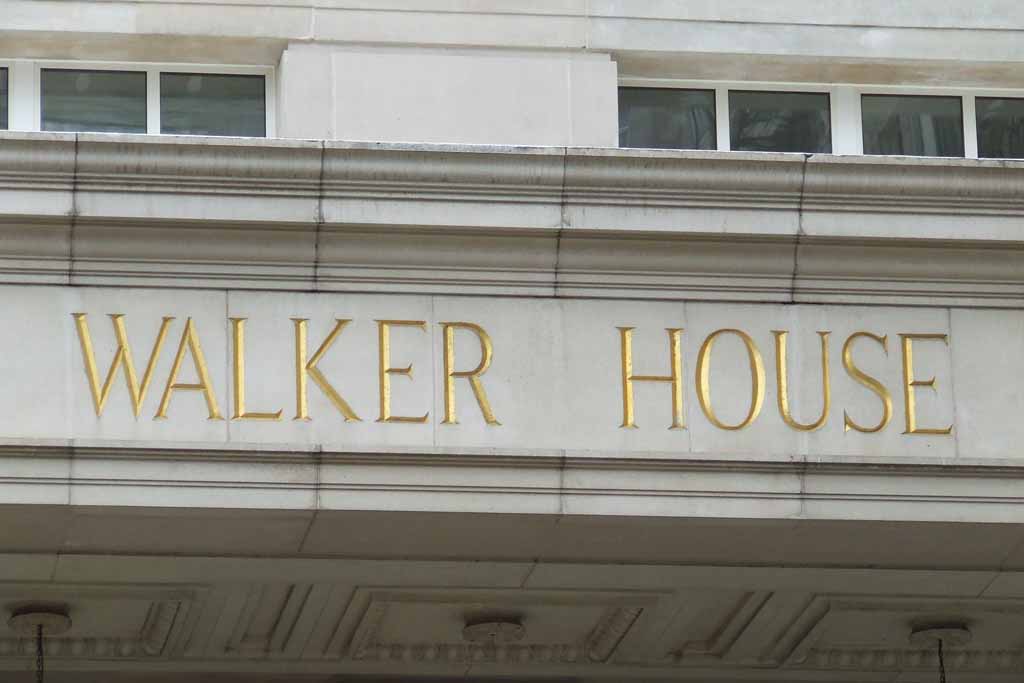 on the opposite side, named after Captain Walker RN, both of which are directly behind the Town Hall, Castle Street. |
|
Here, in the gas proof, bomb proof basement of Derby House, the Battle of The Atlantic was masterminded, and a great victory won. From these bunkers, the Western Approaches, under the inspired leadership of Admiral Sir Max Horton, took hold of the largest collection of vessels ever assembled in history. Popularly known as "the citadel" this was the worlds first combined operations command HQ, and became the prototype for all such establishments around the world. The Battle of the Atlantic was probably the most crucial battle of the whole of WW2. Twice within 25 years, German U boats had attacked Britain's sea lanes with devastating results. In the early part of WW2, "Wolf Packs" very nearly brought out seaborne trade to a complete standstill. Without these very essential supplies, the United Kingdom population would have starved within 3 weeks to a month. Something clearly had to be done, and done fast! As Winston Churchill wrote "Battles may be won or lost, but dominating all out power to carry on the war, or even ourselves alive, lay our mastery of the ocean routes and the free approach and entry to our ports". Hitler's most secret and effective weapon was "enigma", a coding machine used to convey vital intelligence to his submarine fleet in the Atlantic. Using more than a hundred keys, the code was almost unbreakable and baffled the experts at Bletchley Park. Following a dramatic chase in the Mediterranean, two British sailors entered a sinking U boat and rescued the enigma machine and its code books, passing them to a young sailor before they both drowned. This amazing act of heroism gave the experts the break that they needed, and it meant that we could read the German's top secret submarine instructions. It was here in the de-coding room that these instructions were translated and the recoded information transmitted to the Air and Sea Forces in the Atlantic, enabling them to hunt down and destroy the submarines. There are many different versions of how the enigma code machine came into British hands. This is a variation of what did actually happen. Bletchley Park managed to get their hands on several machines throughout the course of the war, taken from weather ships and captured U boats alike. See my Enigma page, for details. In 1942, Admiral Sir Percy Noble, who was the original C in C of Western Approaches as moved to Washington and was succeeded by the famous Admiral, Sir Max Horton, one of Britain's leading submariners from WW1. his appointment signalled a shift in emphasis in the Battle of The Atlantic. From his office he directed the mightiest fight back of all time. When he died in 1951, the King ordered that his body should be taken to Liverpool and given a State Funeral. The whole city turned out to show their respects and naval ratings from every home port lined the route to the Anglican Cathedral, where he is buried. As this HQ occupied over 50,000 square feet, in 100 rooms, accurate communications was essential both within the walls and between HQ and other offices throughout the UK, including the War Cabinet in Whitehall. These were of course the days before fax machines and computer links, so the messages were sent and received by teleprinter, the noise and heat from these machines, working 24 hours a day, was so intense, that many of the operators suffered constant headaches. Messages were converted into paper tape and taken to the coding room for onward transmission. Many of these messages received were Top Secret, but without the coding equipment, they were useless. The main operations room was the nerve centre of the entire operation. Here on the huge maps and diagrams of the Atlantic Ocean, convoy routes and the progress of all our shipping was depicted, charted and managed. The information being updated constantly, 24 hours a day, 7 days a week. Most of the vital and very skilled work was in the hands of ladies of the WRNS and the WRAF, and there were seldom less than 50 on duty at any one time. Being a Combined Services HQ, men and women of the Navy, Air Force and Marines would be working alongside each other in this massive operation that affected the lives of not just thousands of sailors, both Royal Navy and Merchant Navy, but the entire population. As well as the Atlantic convoys, HQ Western Approaches also commanded the convoys to Murmansk and other destinations in both Russia and Northern Europe. On the large table in the centre of the room, the situation map would be located. On this chart, enemy locations could be pin pointed. Total accuracy was vital to enable the Royal Navy to search, contact and destroy the enemy. On the aircraft state board at the rear of the room, the readiness of all the RAF stations could be displayed as well as up to the minute information about current air operations. Another very essential aspect was of course - the weather! This was also being constantly updated and displayed. The Western Approaches is a rectangular area of the Atlantic ocean lying on the western coast of the United Kingdom. It is roughly the same height as the west coast of Britain, starting directly on the coast and ending in the Atlantic roughly at Iceland. The area is particularily important to the UK, because many of the larger shipping ports lie in this area. The term is most commonly used when discussing military actions, notably during the Battle of the Atlantic (both of them) when the German Kriegsmarine attempted to blockade the UK with U-boats operating in this area. Since almost all shipping would pass through this area, it was an excellent hunting ground and had to be heavily defended. During WWII the task was so important that it had its own commander, and the HQ was moved to Liverpool to be closer to the action, while most of the fleet HQ was in Plymouth. The most famous commander of the Western Approaches was Admiral Sir Max Horton, who took command in November 1942 and immediately instituted a series of tactical changes in the way the escort ships were to be used. Organizing them into "support groups" and "hunter-killer groups", they were to operate at longer distances from the convoys and prevent the deadly wolfpacks from ever forming. The technique was successful: with more forces becoming available, rapidly improving technology (particularly radar), and information being provided by Ultra, the battle was soon over with the Allies successful. I was sent a snippet of information regarding SO (Tac) at HQ Western Approaches. I note that it gives full credit to the C in C for the innovative ideas which led to the ultimate defeat of the U Boat. It fails to mention the cold hard fact that Capt Walker RN, on return to shore, went immediately to the Admiral via a waiting car, to update him on results, tactics etc and, most importantly, recommendations. It was also the idea of Captain Walker to send ships out, independently of convoys, in order to find, hunt and destroy the U Boat. This was the birth of the 'hunter killer'. Walkers recommendations and practise was adopted by the Admiralty for all naval vessels. Here is the snippet. If anyone has any information of this Cdr, I would be grateful. Walker was the 'highly experienced' anti submarine officer that Horton used, as Walker was a former CO of the ASW establishment between the wars. Cdr Hugh Falcon-Steward's next assignment was as Staff Officer for Tactics to C in C Western Approaches at HMS Eaglet, Liverpool. Admiral Max Horton had been appointed Commander-in-Chief, Western Approaches Command, the previous day and may have handpicked this highly experienced former anti-submarine officer to help him develop the tactics which finally defeated the U-boat menace. Horton retained the existing convoy escorts but introduced support groups which had much more freedom to pursue submarines to the death, even if this meant leaving the convoy for longer periods of time than were considered acceptable for escort groups. Horton's support groups proved to be decisive in the crucial spring of 1943, taking the battle to the U-boats and crushing the morale of the U-boat arm with persistent and successful counterattacks.
An email from the USA. April 2010:
On reading your material on Admiral
Max Horton and Western Approaches, it is possible that my father had a story of
interest to you. He was an engineering officer on USS Wilkes. On their first
visit to Liverpool, he was told to take a group of five sailors to a base
nearby, Greenock. They were to get specialised training. On arriving, it turned
out to be a formal training program about boarding a U boat. There was a full
scale replica of a U boat's interior done in wood. After some preliminary
information, the crew was assigned tasks to keep the sub from sinking. The
first person to go down the hatch was the gunner's mate assigned to the team.
He was supposed to handle any die-hard Nazis. (As he recalled, they had been
told to bring along an automatic weapon for this task. Unfortunately, Wilkes'
only such weapon was a BAR, a light machine gun of great weight and almost five
feet in length. After dropping the weapon while going down the hatch, the
British trainer dryly suggested getting a sten gun, or a tommy gun as more
handy.)
Note: I replied stating that it would make sense that, due to the extreme sensitivity of the issue, the subject of codes would not arise. The Radio Op would have been trained in boarding a U Boat and where to head for and exactly what to look for. Then, afterwards, would be ordered to forget everything he had seen or read, it would 'never' have happened! By the way, Greenock is in Scotland, and not 'nearby' !! (see text) |
|||
|
Email: July 2016:
Thank you Mike for
including my mother's name in the dedication for Western Approaches - it
means so much to us and I was thrilled. |
|||
See also Cabinet War Rooms
http://www.liverpoolwarmuseum.co.uk/ - HQWA's Own Site
http://www.timbosliverpool.co.uk/
http://www.bbc.co.uk/liverpool/localhistory/journey/underground/western_approaches/tour.shtml
http://www.liverpoolmuseums.org.uk/maritime/exhibitions/boa/home.asp
http://www.worldwartwo.uk/atlantic.html